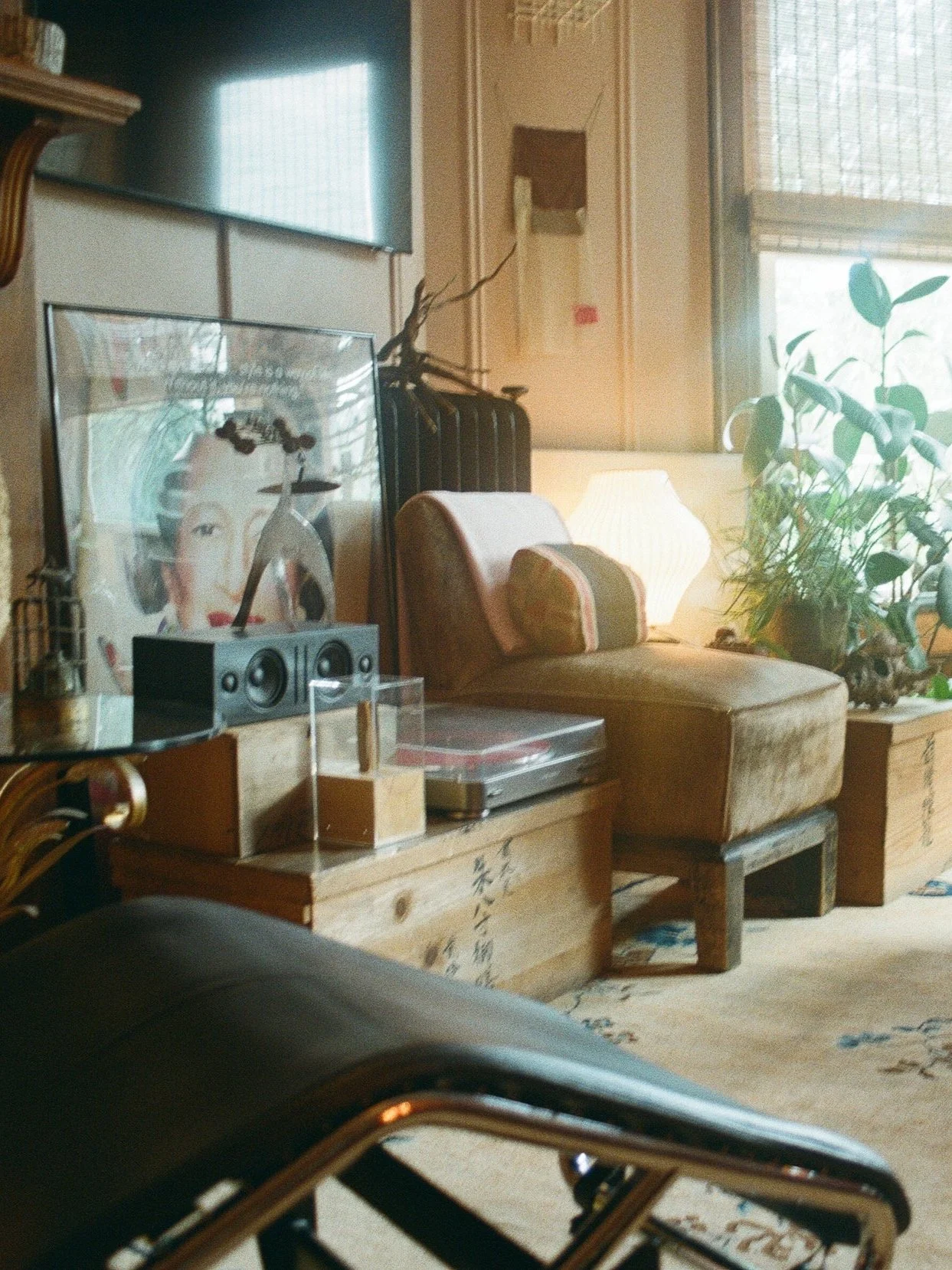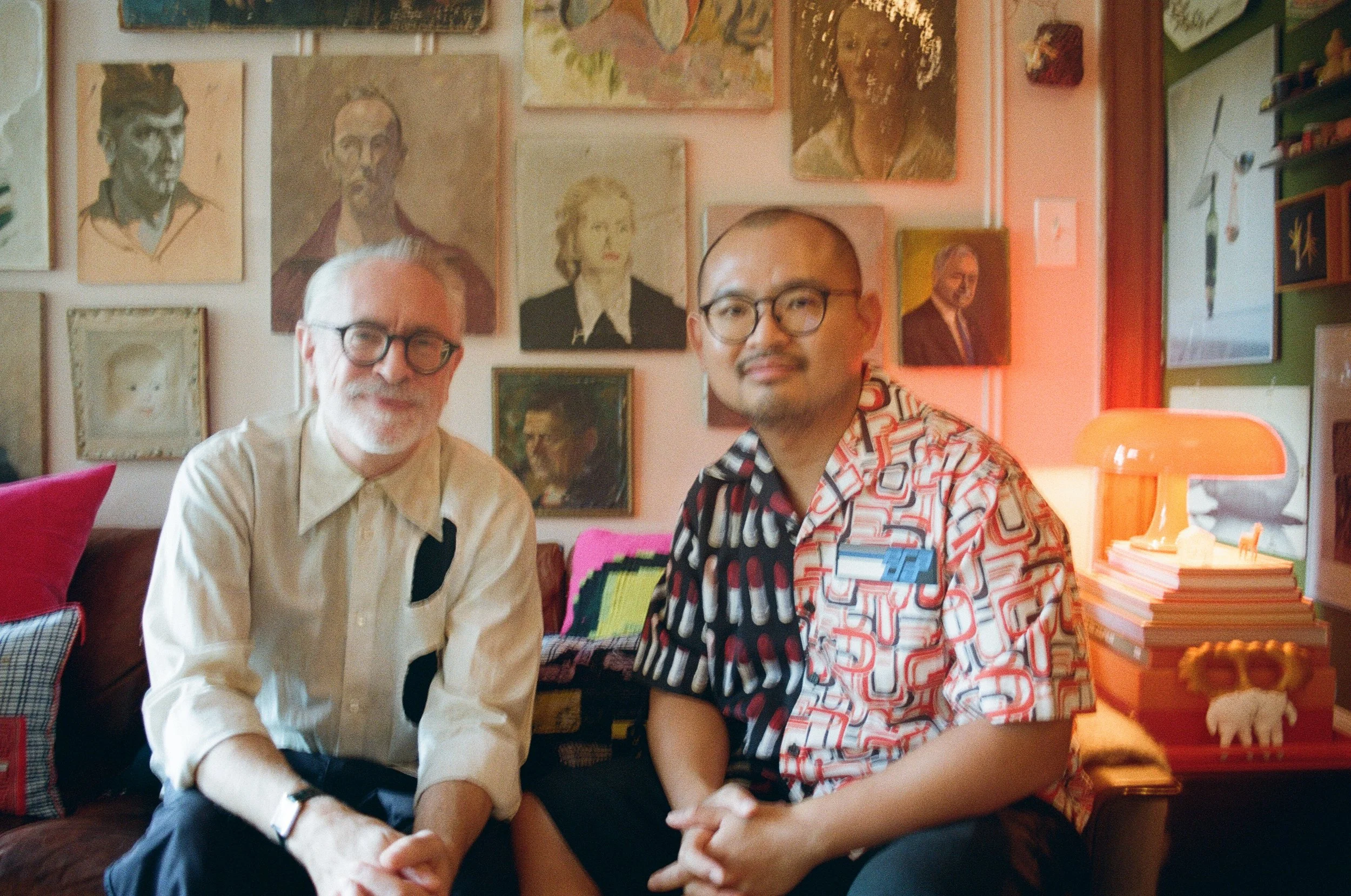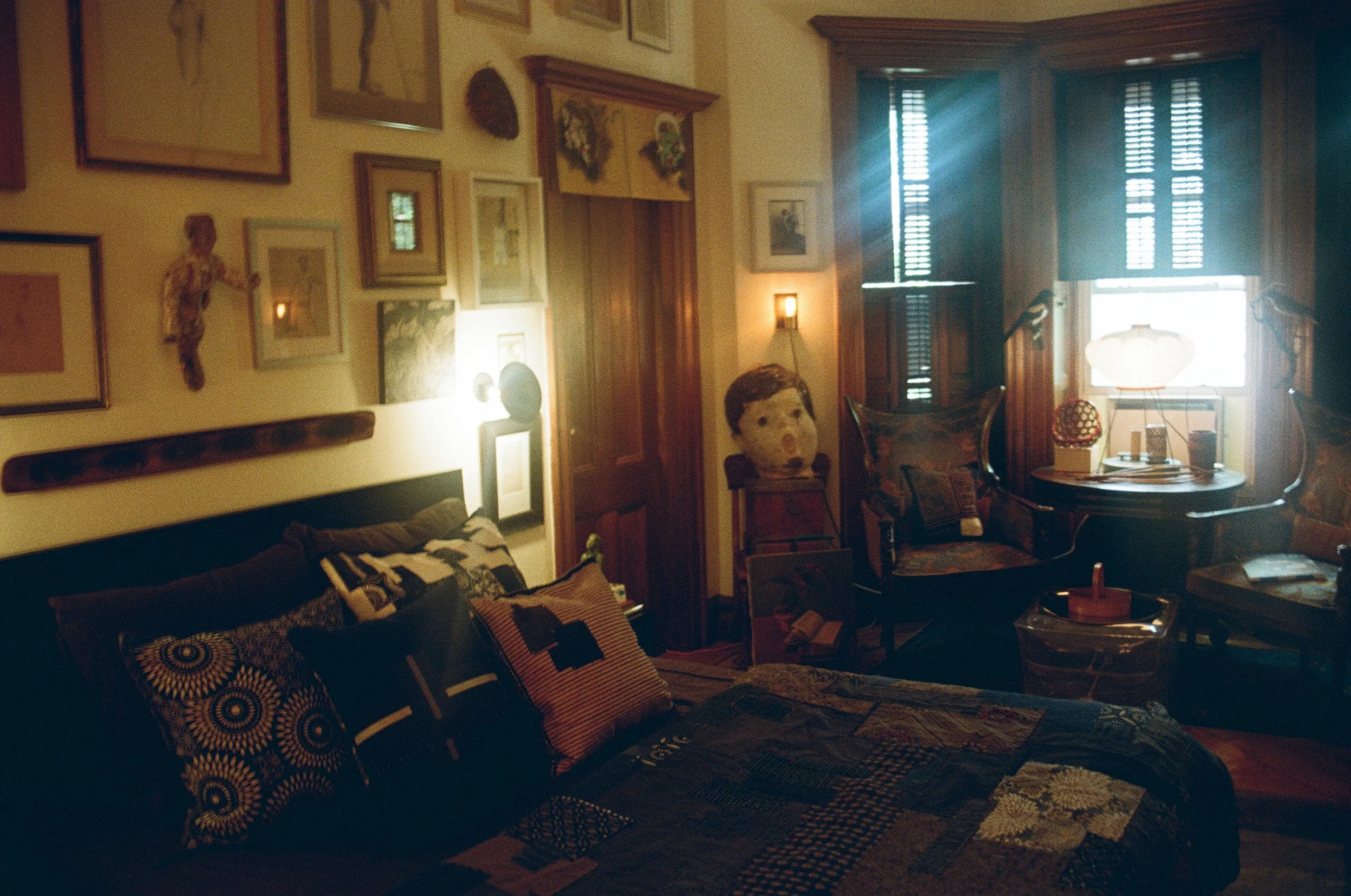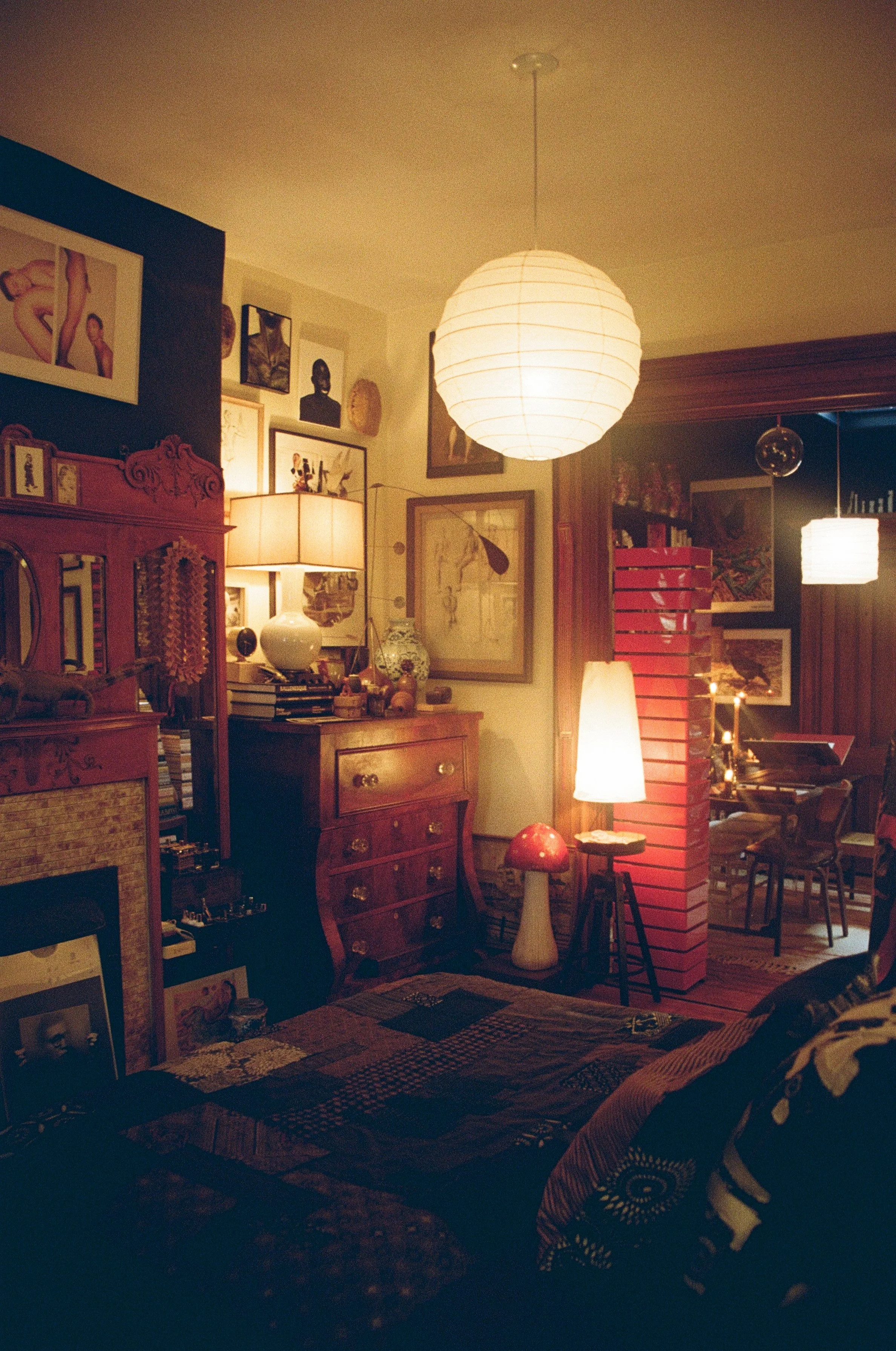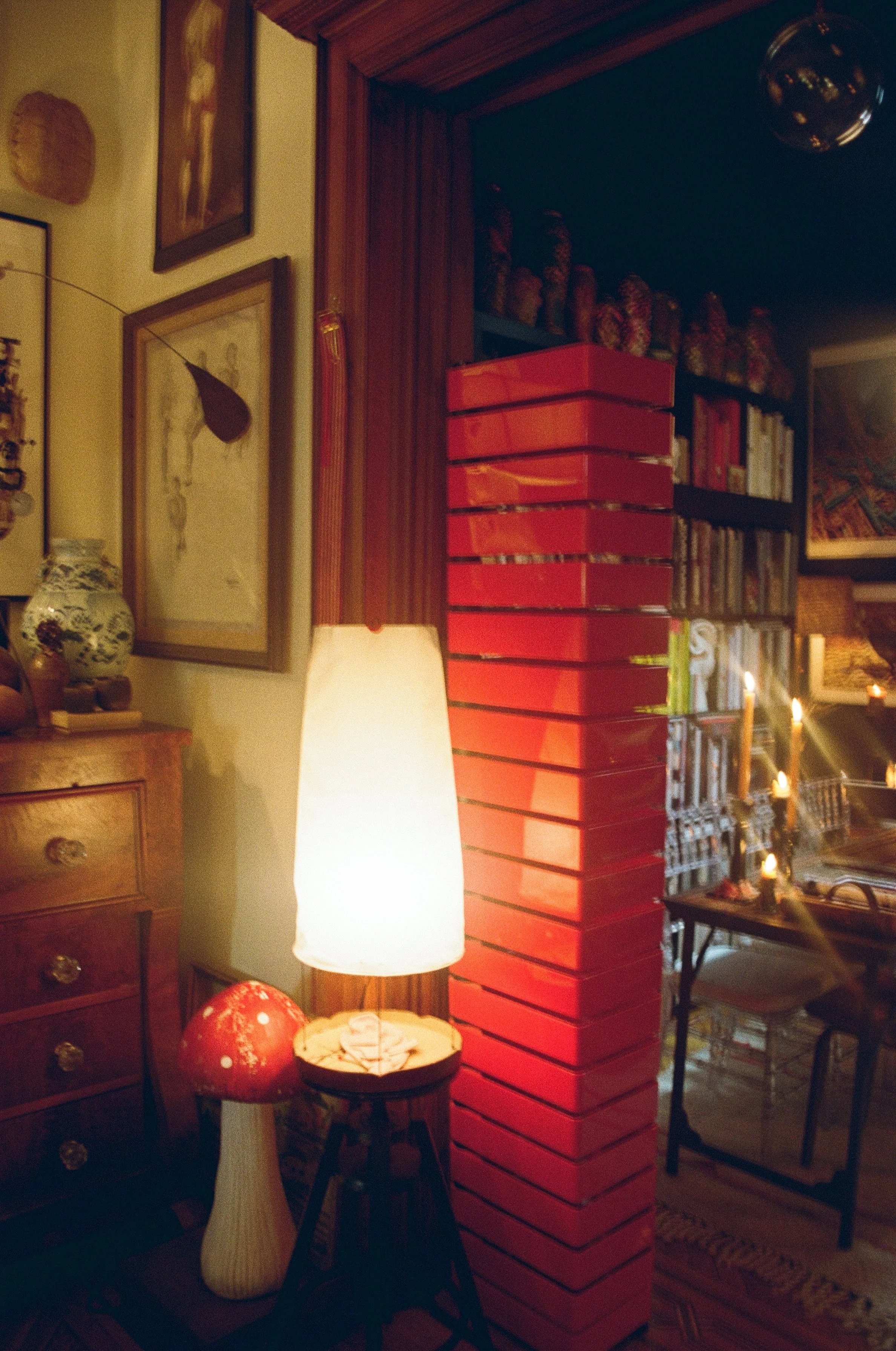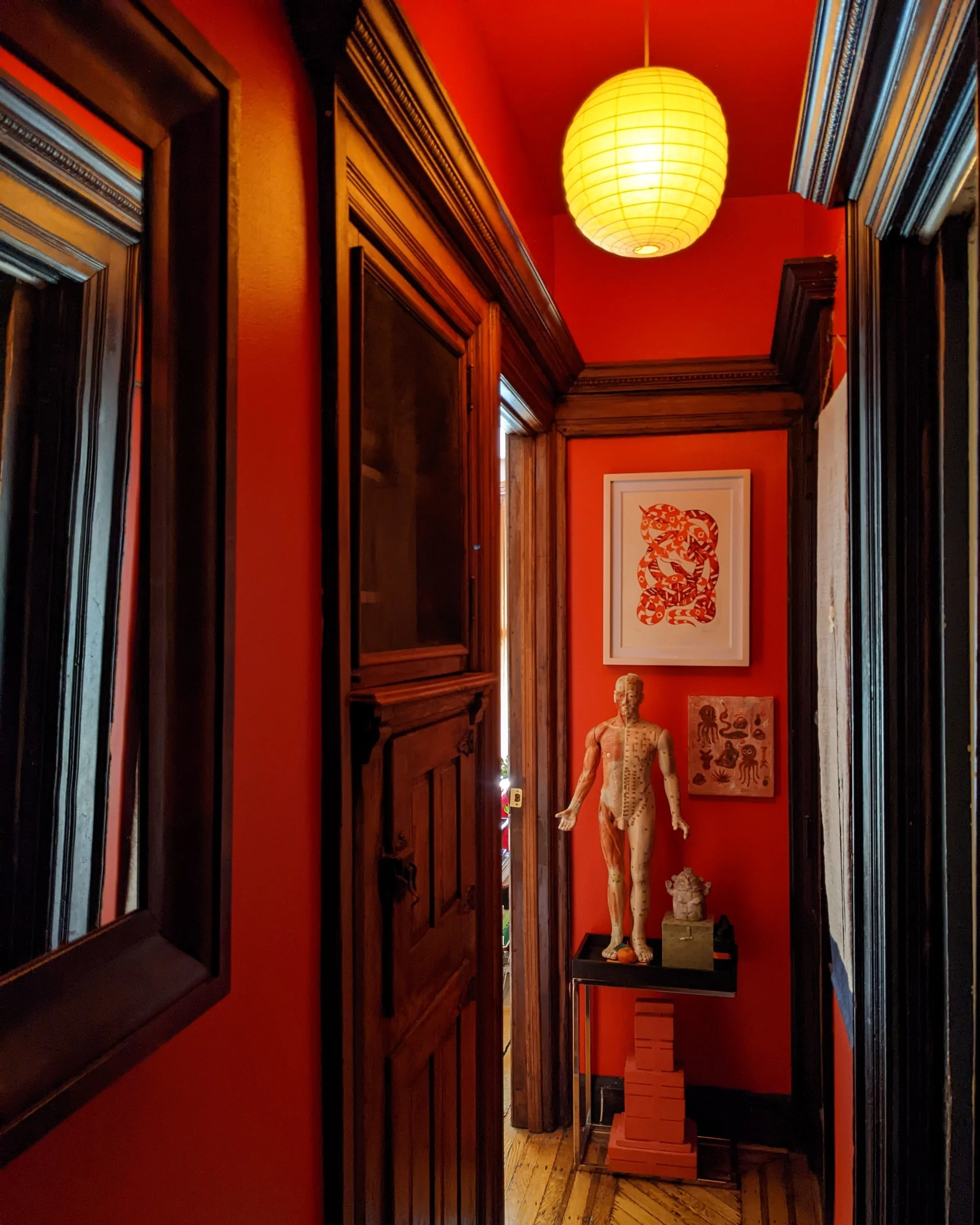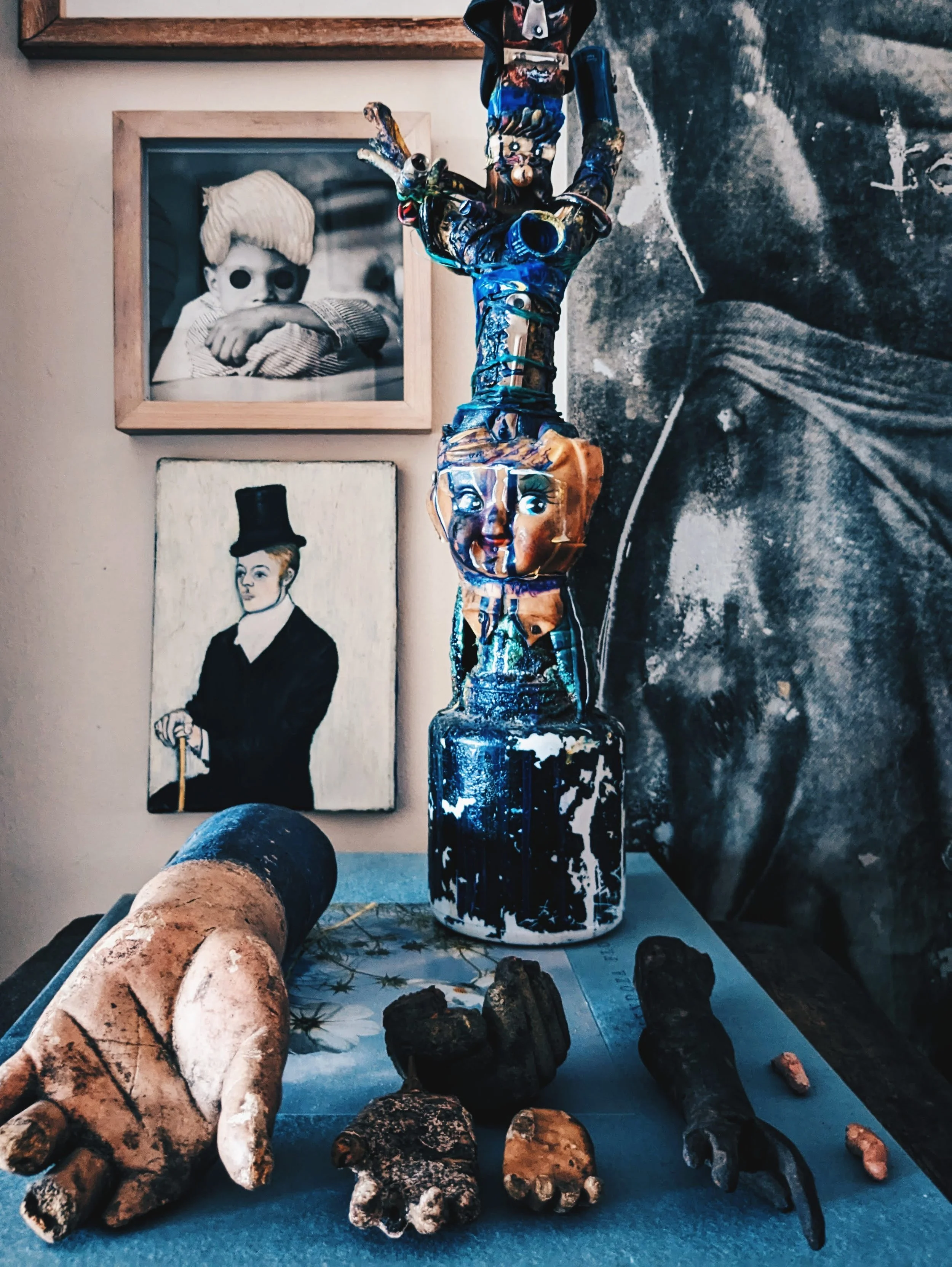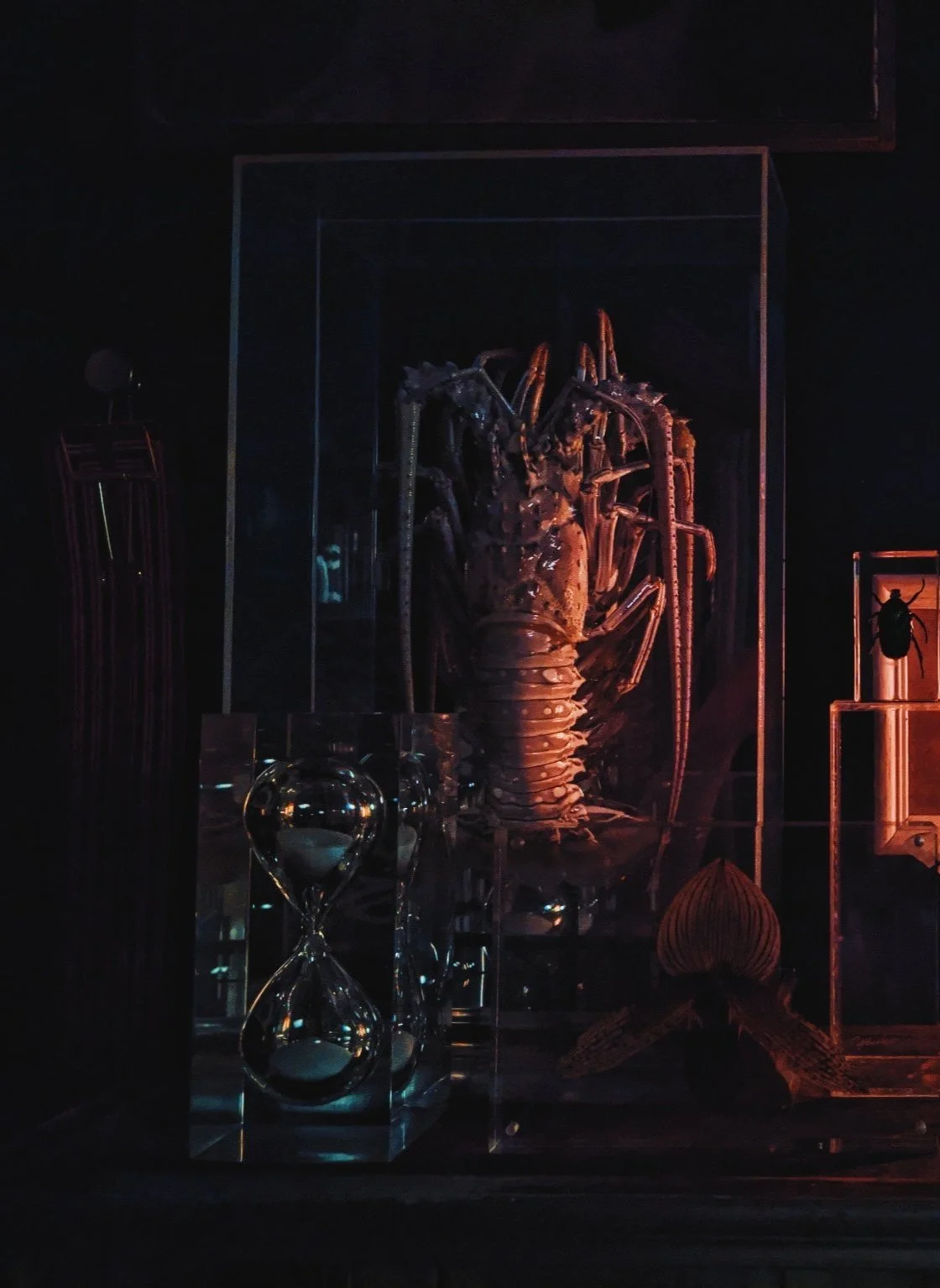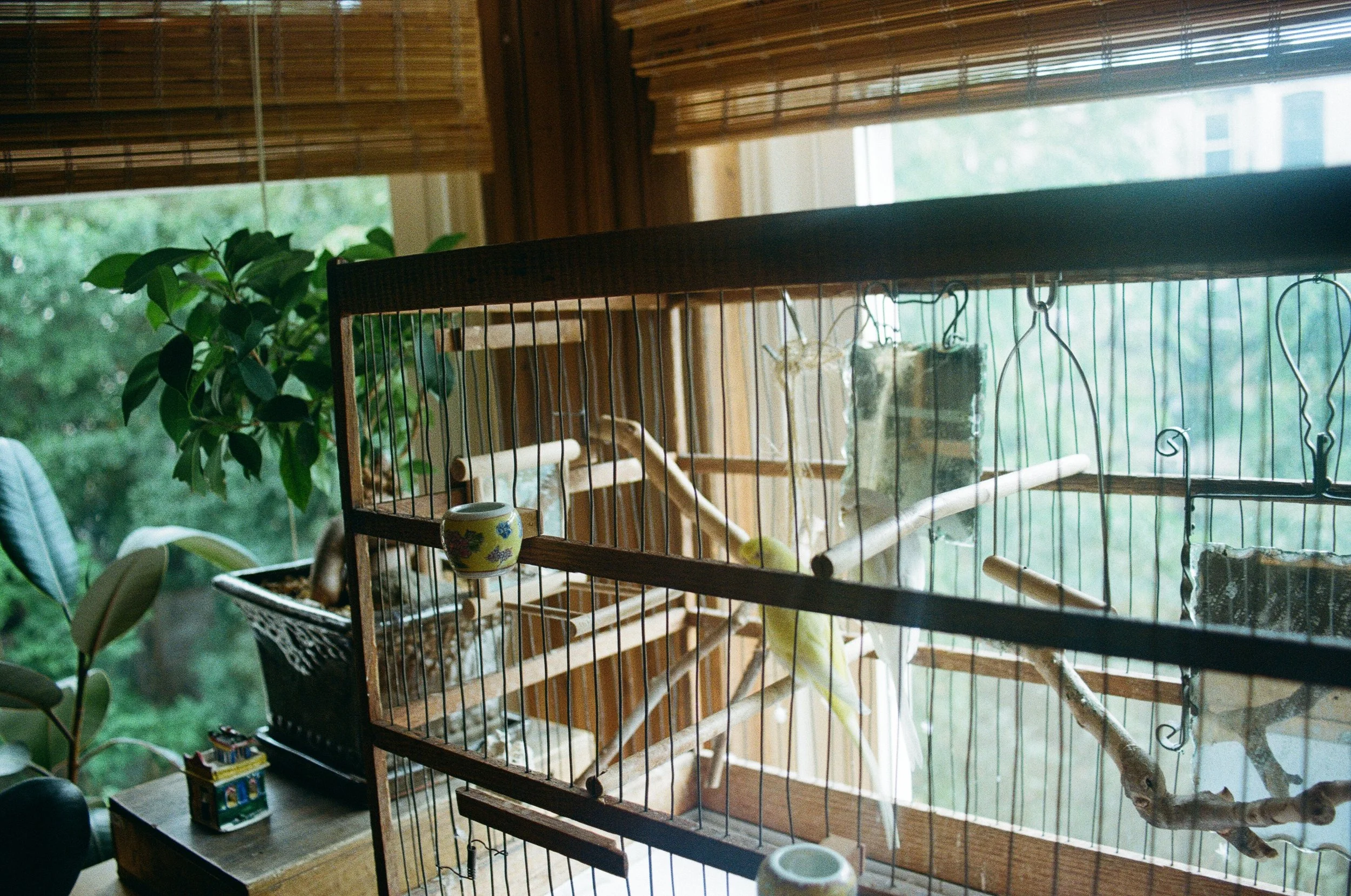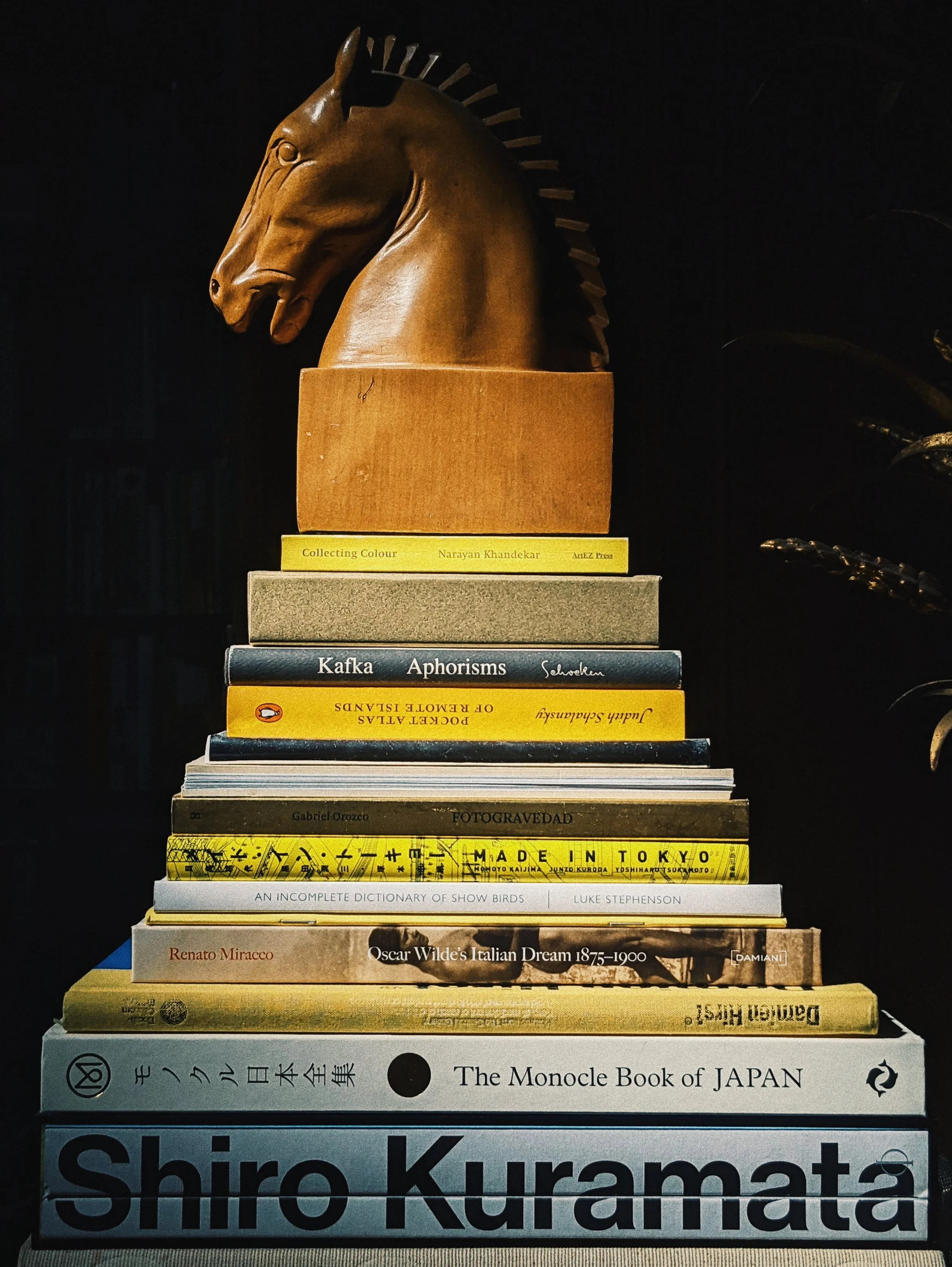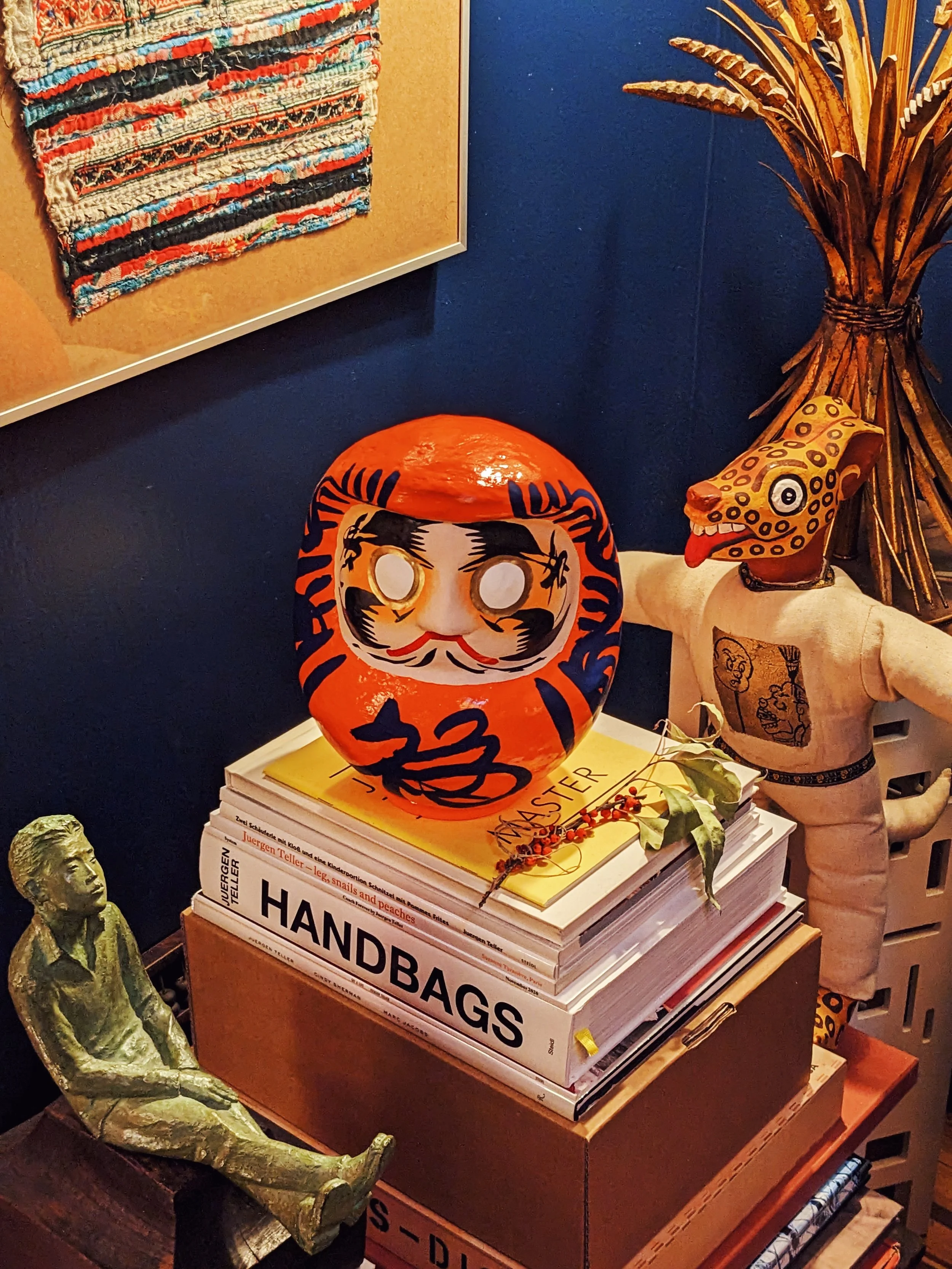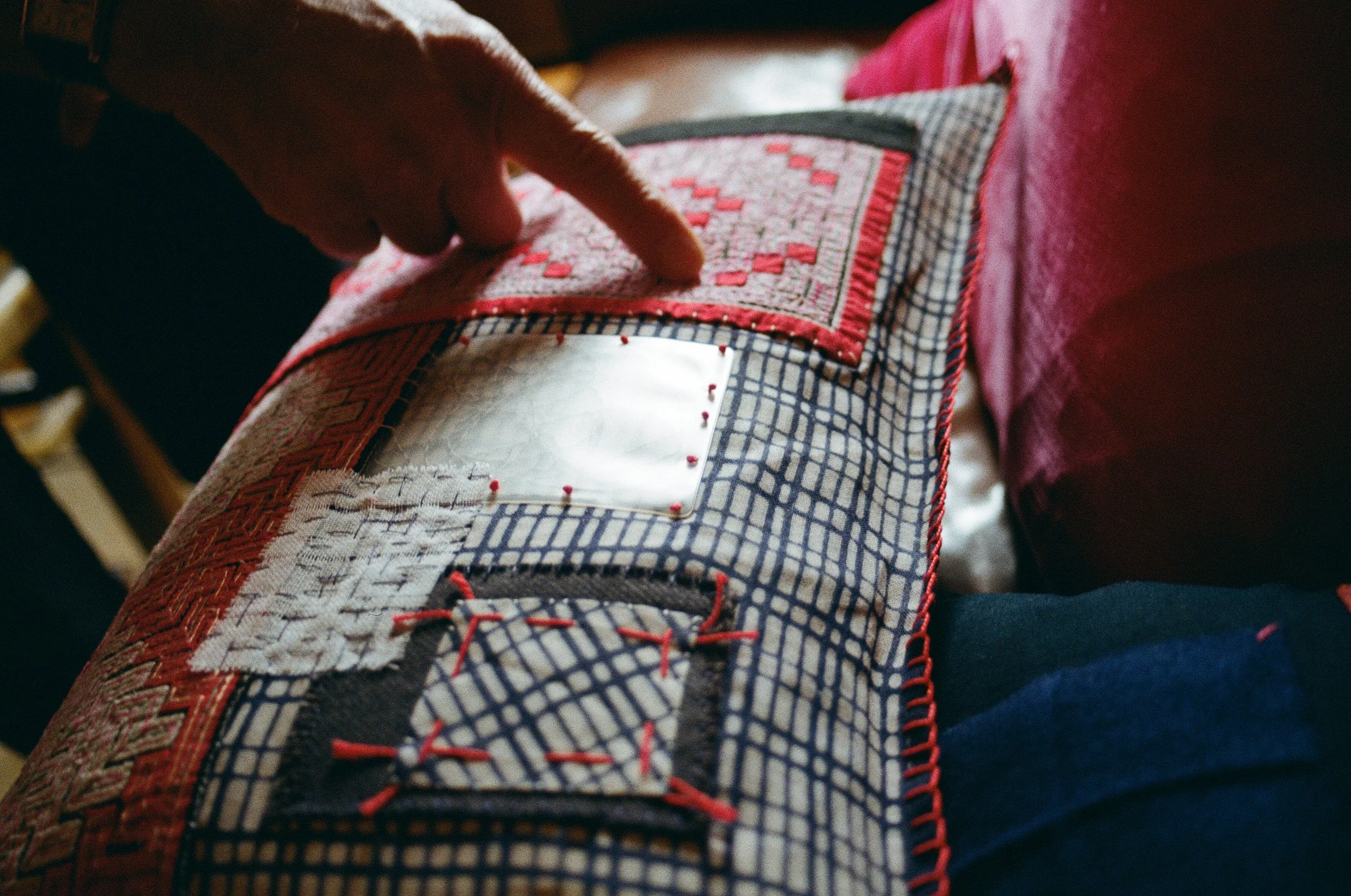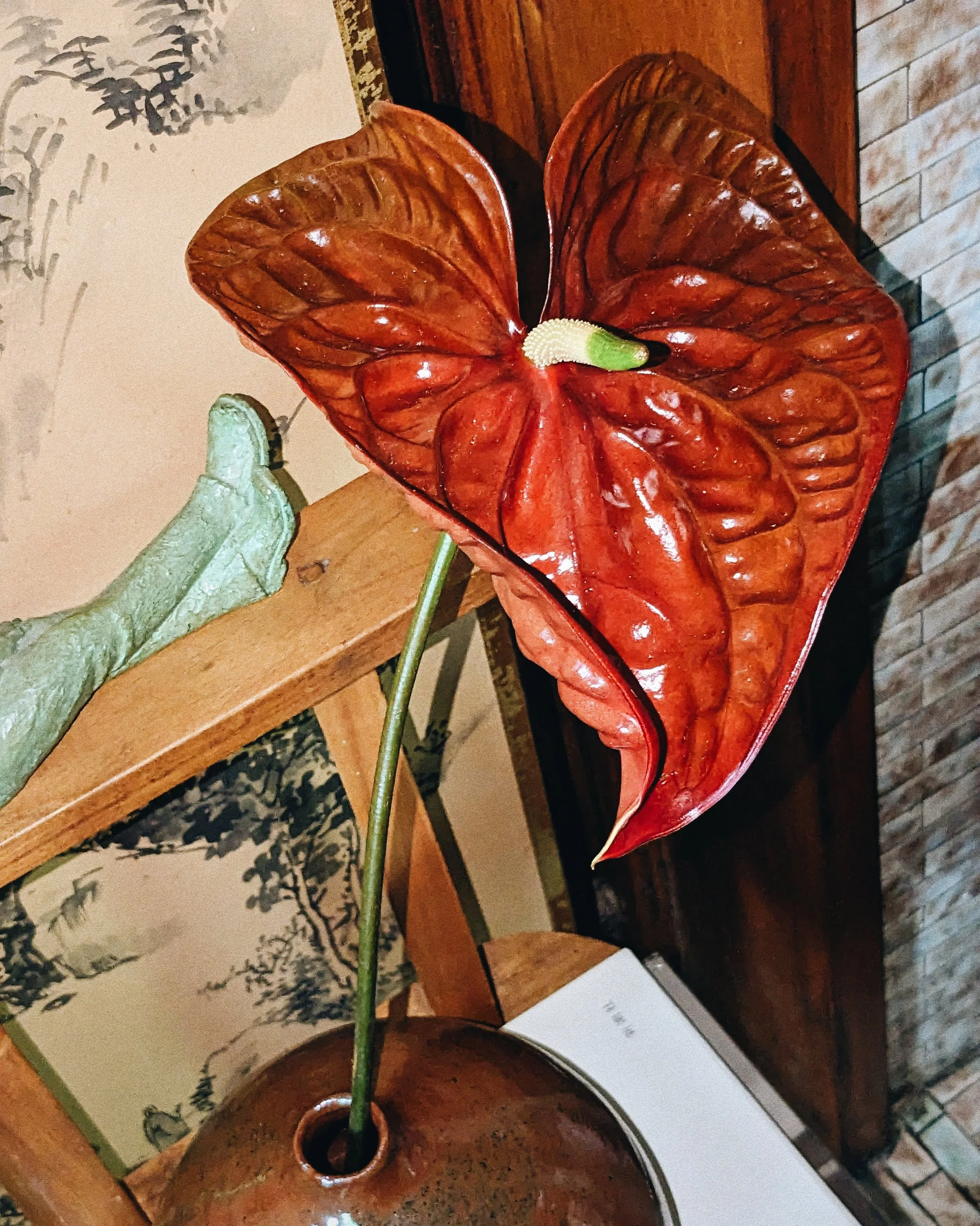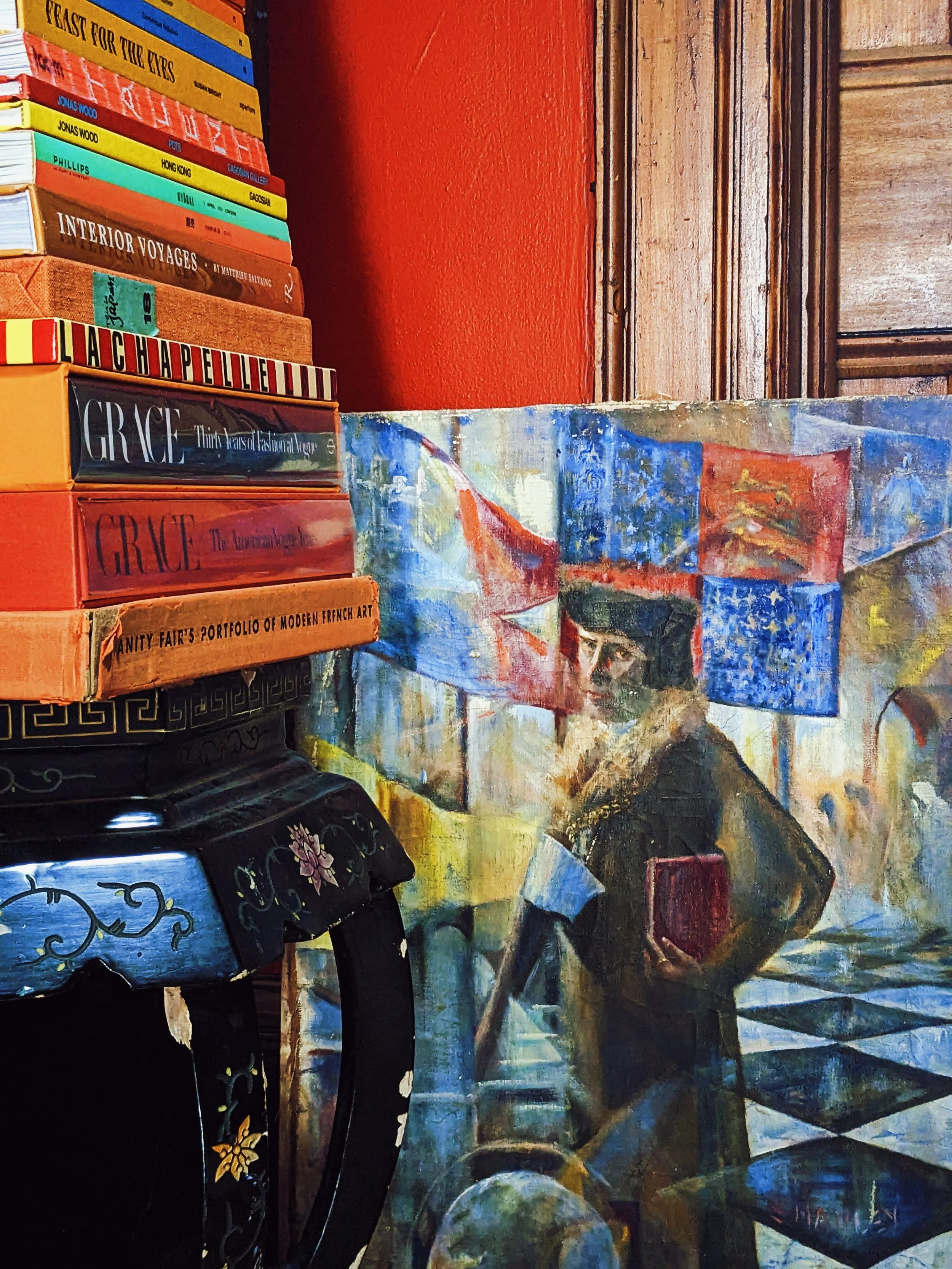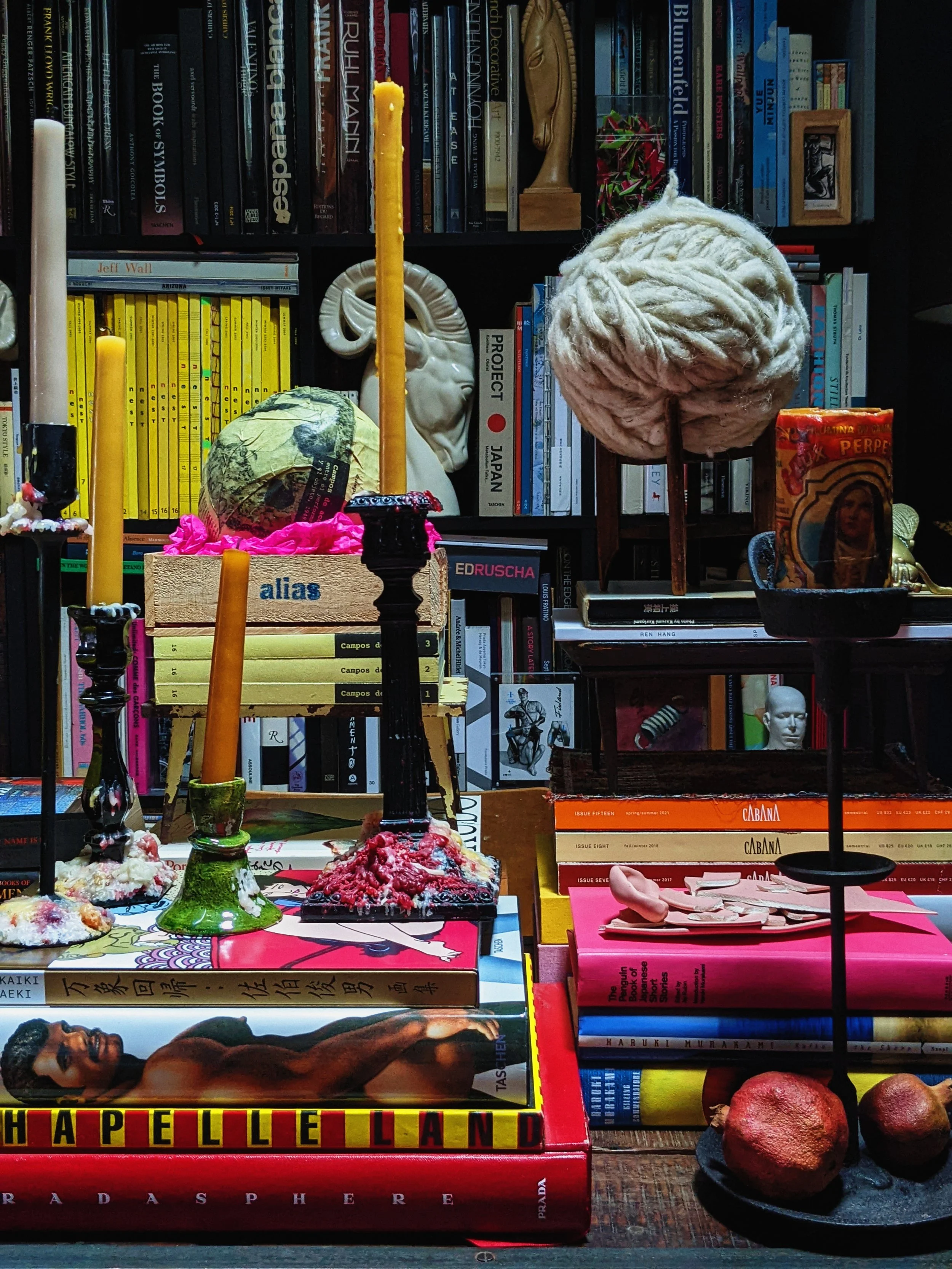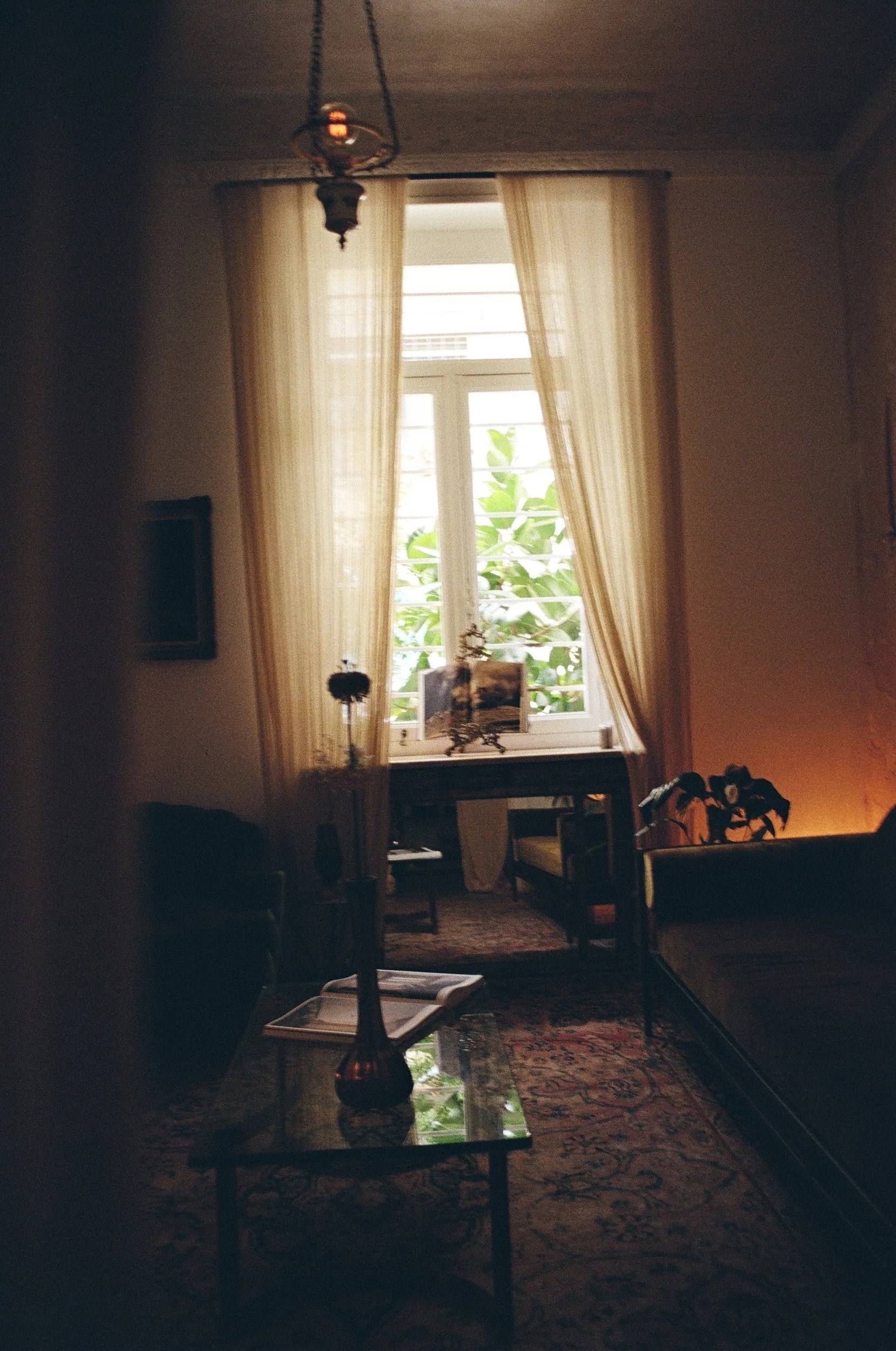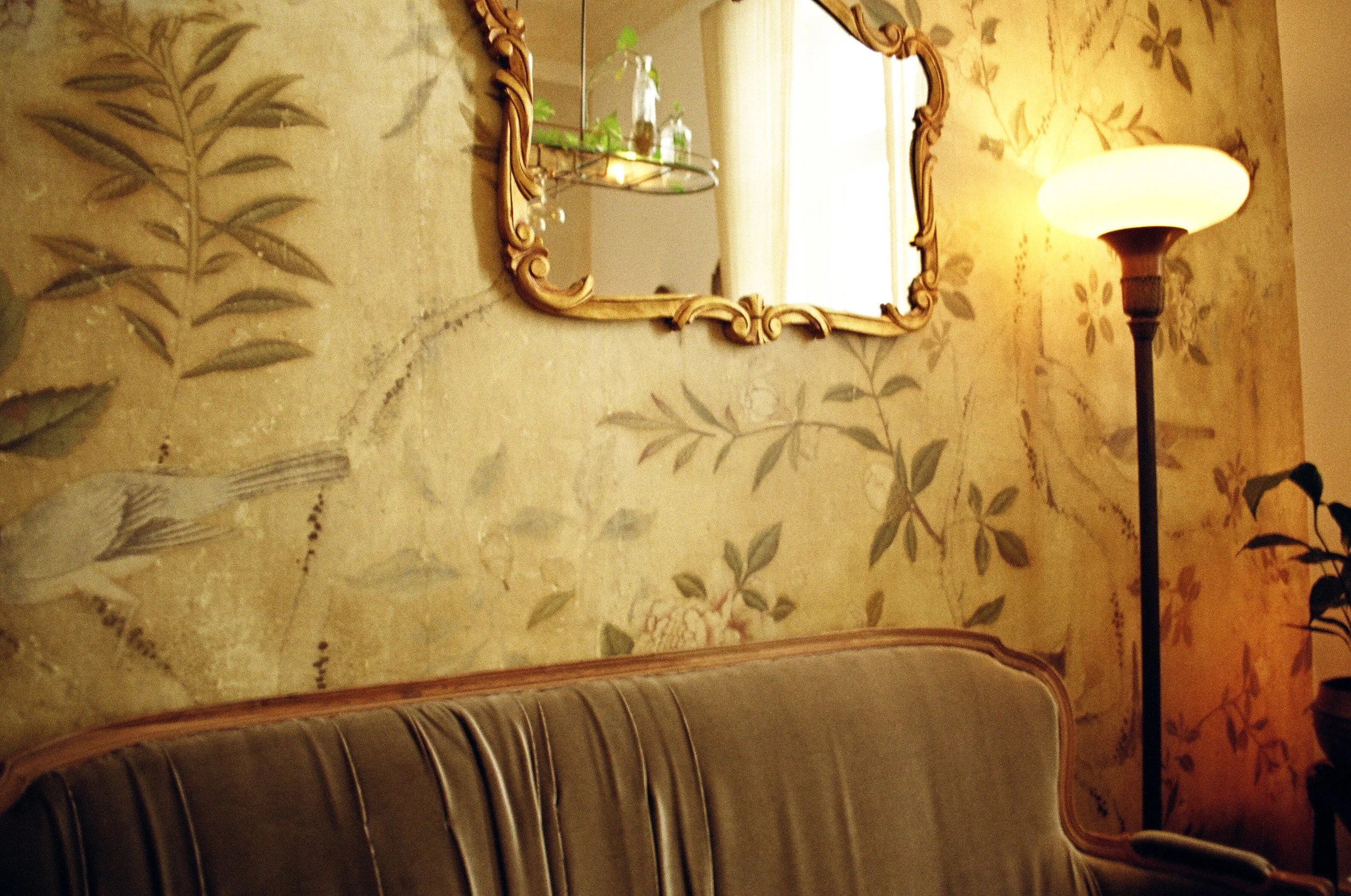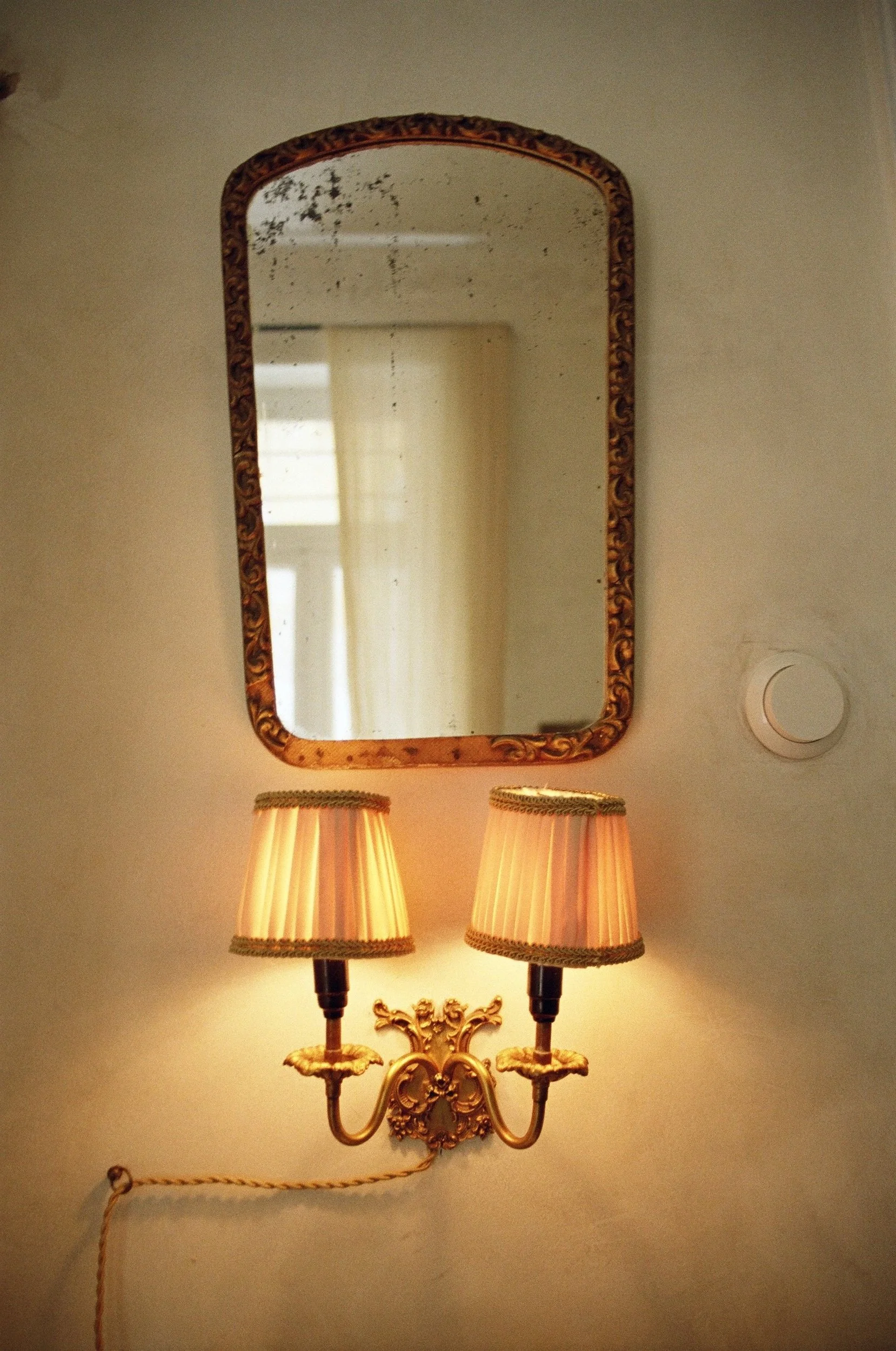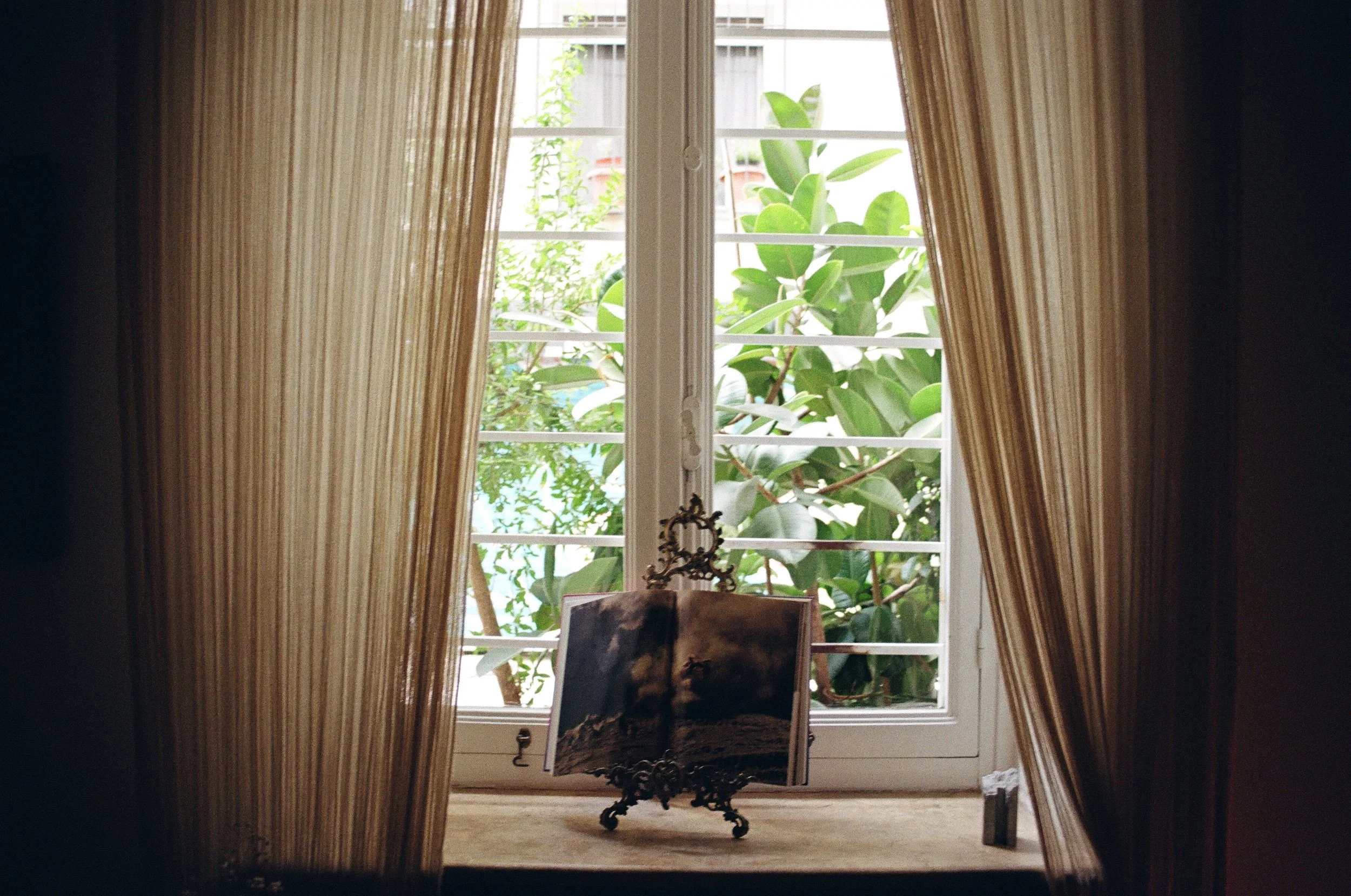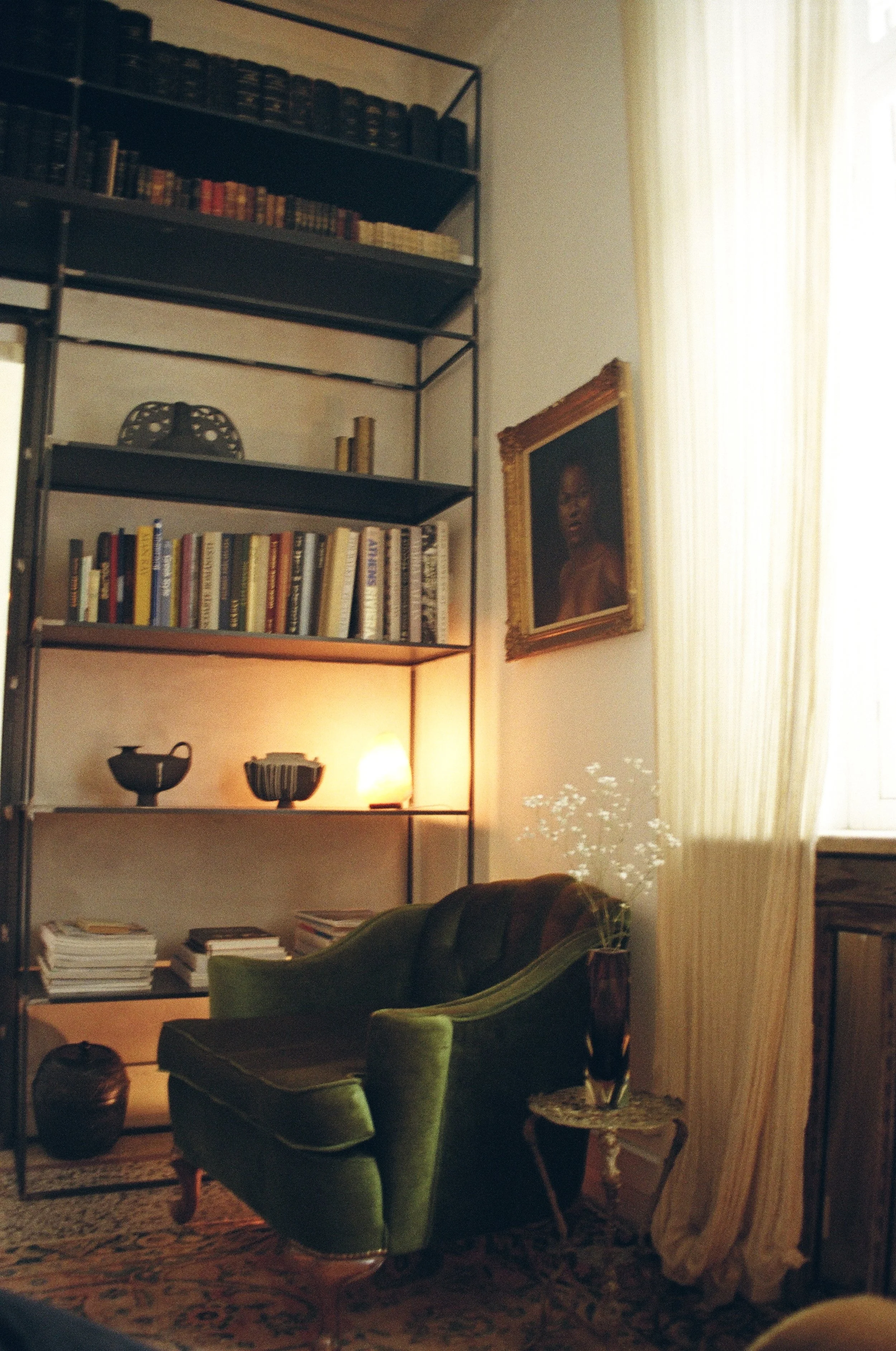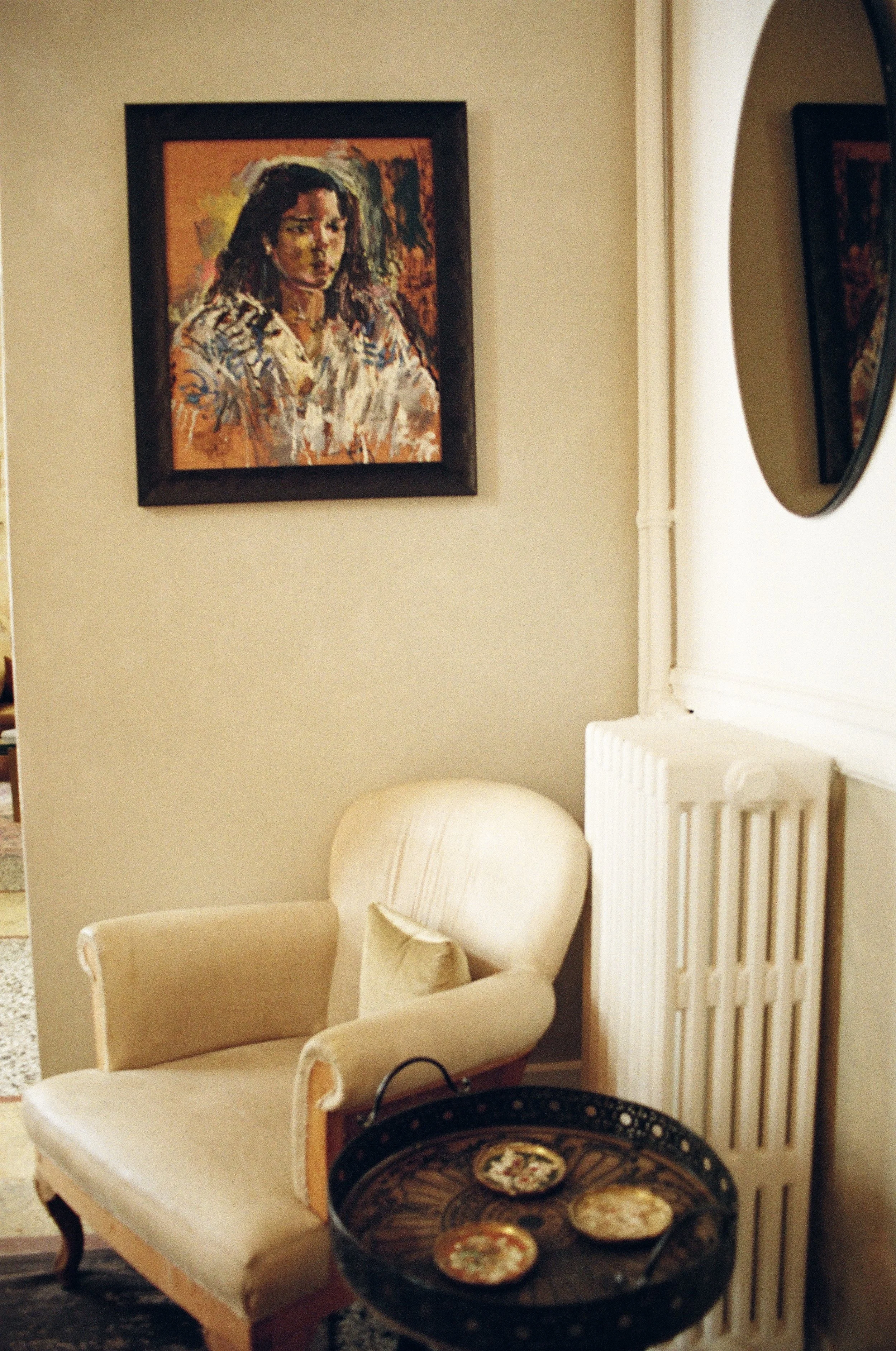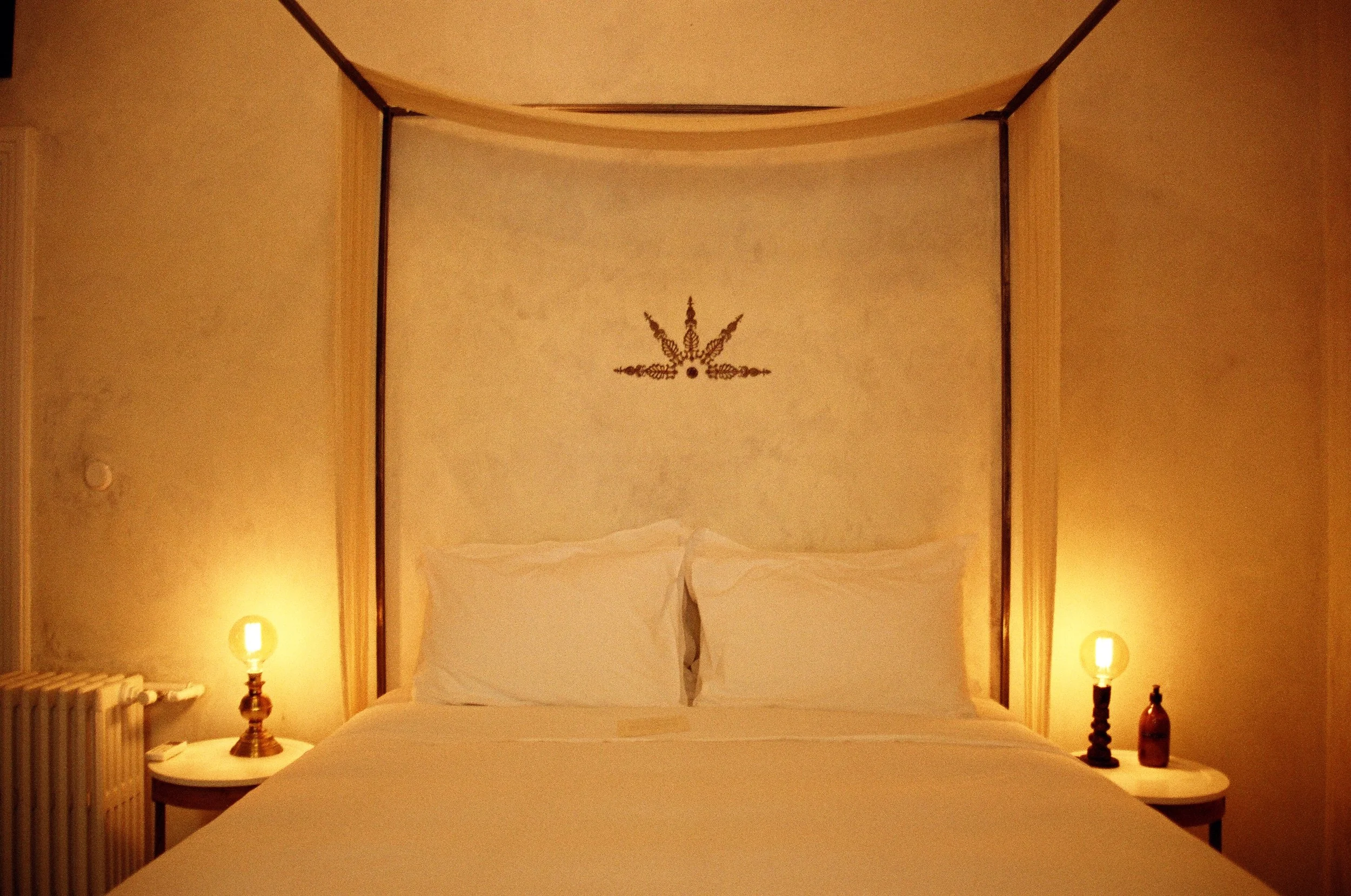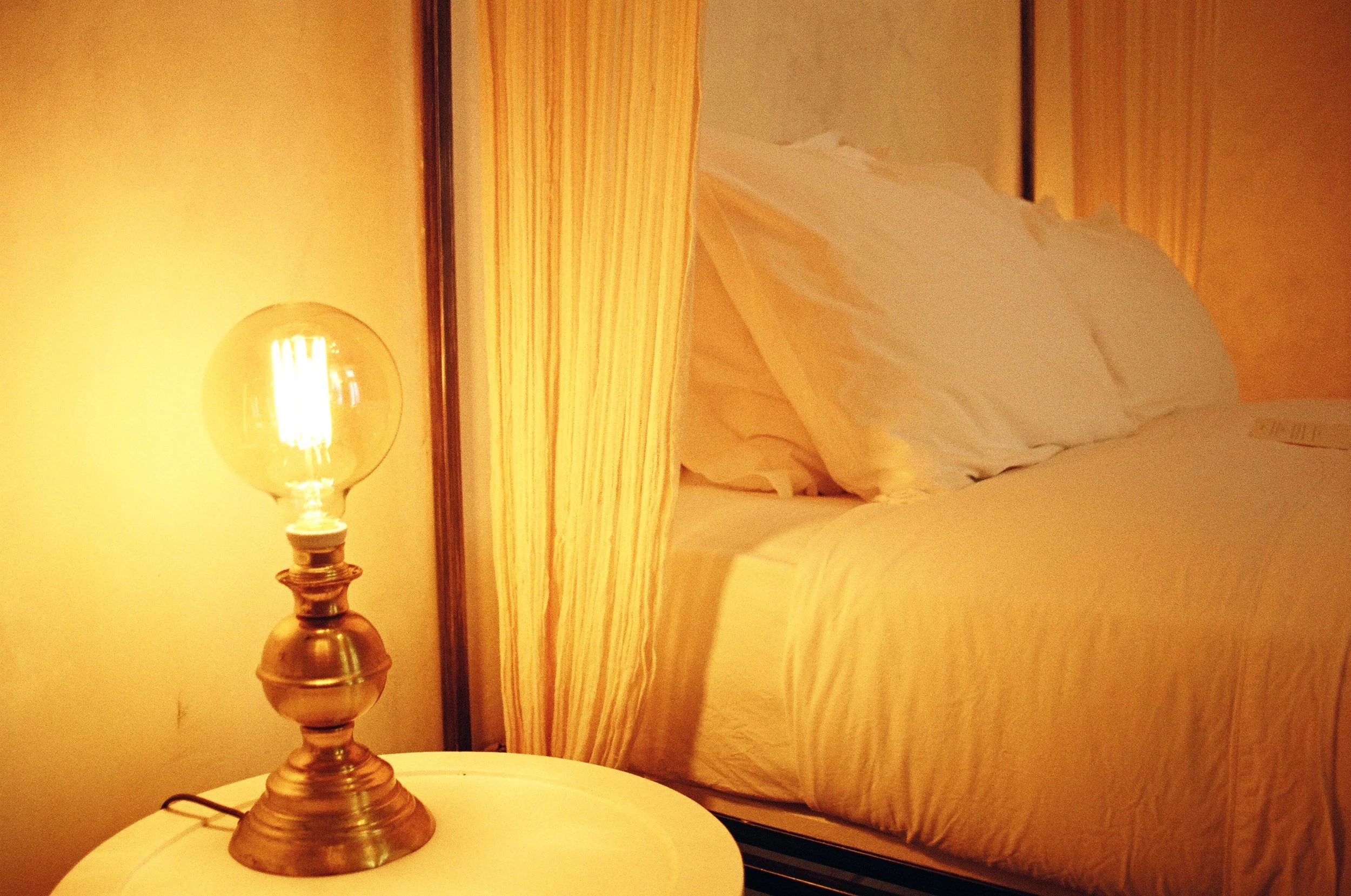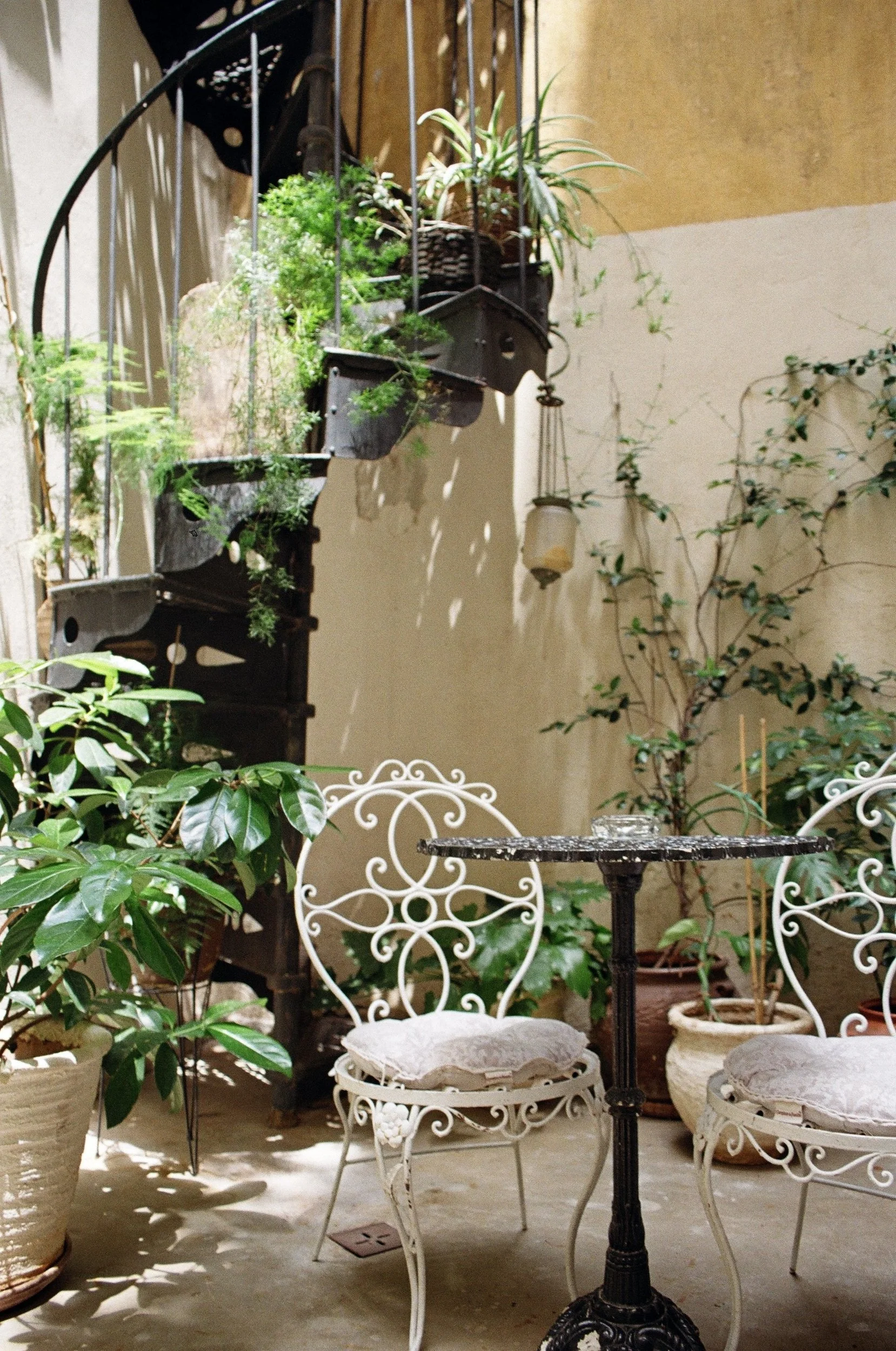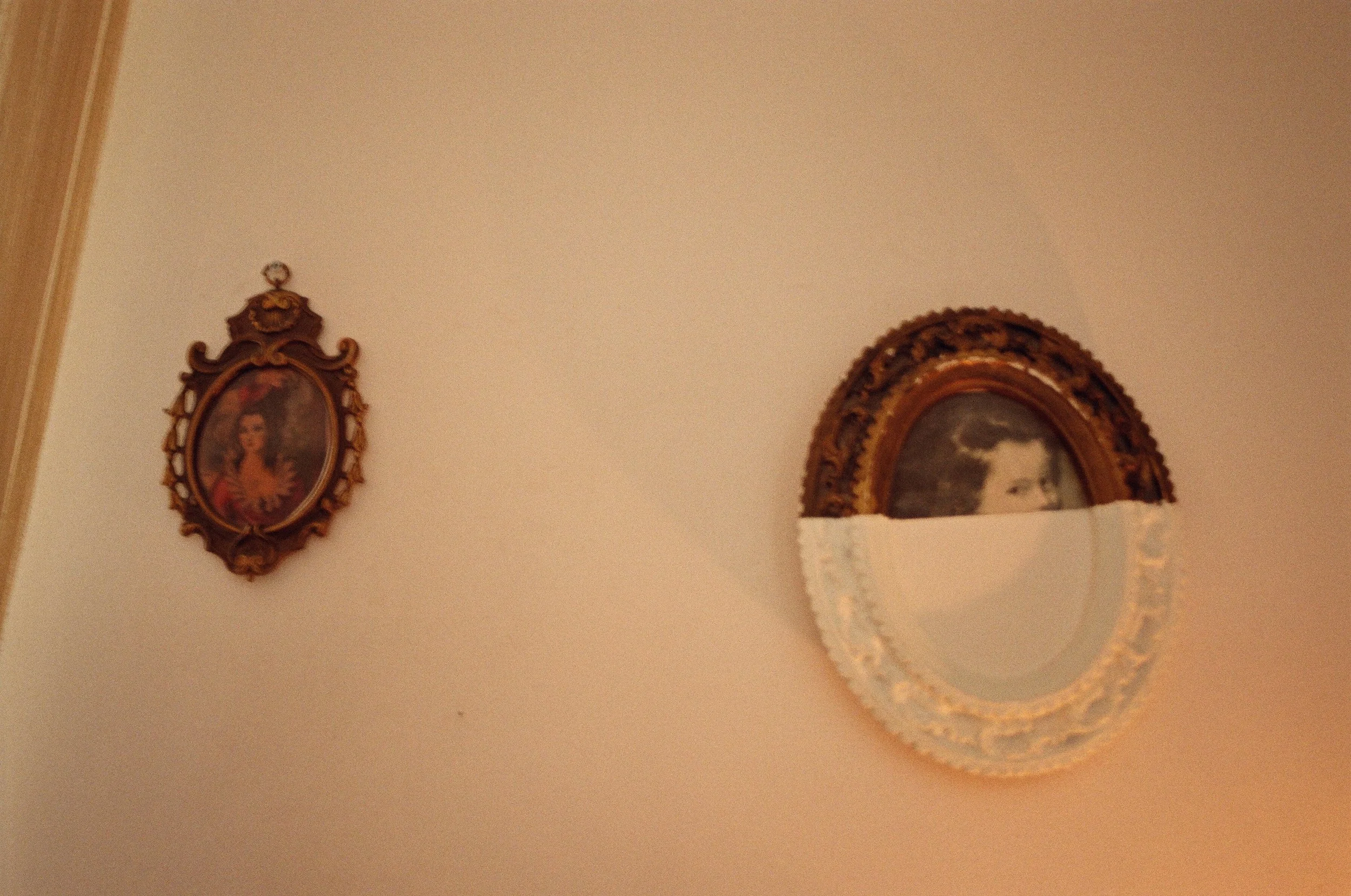in conversation with . . .
michael brown & duy pham
Photo courtesy House of Shila
Michael Brown and Duy Pham are the owners of Speaklow, a vintage store in their Bedford-Stuyve-sant floor-through brownstone apartment, where everything is up for sale.
Over their years of collecting for themselves, they have developed a layered, eclectic, and maximalist vision for their home.
Keep in touch with Michael and Day:
Instagram
@speaklownyc, @brnsquare, @clubduy
Website
www.speaklownyc.com
Words by: Tina Iasonidis
Photos by: Tina Iasonidis, unless otherwise noted
Interview recorded:
In your own words, who are you, and what do you do?
Michael Brown: I am a collector, designer, stylist. I also do freelance work for Bergdorf Goodman in visual merchandising. I feel like I’m a magpie―anything that catches my eye, I just like to get into. Usually one thing is just not ever enough. Once I find one object, then there’s going to be more that goes with it somewhere.
Duy Pham: I’m a graphic designer and art director. I’ve collected books for my whole life. I love printed matter and posters. I also love the fashion brand Comme des Garçons. That’s part of how we connect, through our shared passion for the brand. When we met, we started more lifestyle collecting together: ceramics, found ob-jects, found art.
What is Speaklow?
DP: Speaklow is a two-man operation that brings together our individual passions for design, fashion, art, interiors. We each have our own individual style and taste, so Speaklow is this combination of different passions and interests. There’s a lot of, I think, necessary friction from different backgrounds and interests to kind of create something very dynamic. It’s different from a one-man operation when you have your own interests and passion. I think the two of us complement each other, but also we challenge each other, so everything you see in here is a dissertation, and it’s in conversation, and there’s a dialogue.
There are things that don’t necessarily fit with each other or work with each other in a traditional sense. But because we bring these sometimes comple-mentary, sometimes opposite, elements, it creates a dynamic feeling that is Speaklow. That’s what we tried to achieve―not to subscribe to one aesthetic or a school. We just love to collect anything that catches our eyes.
I think it’s interesting to see us in action when we go shopping for vintage or when we go on buying trips. We challenge each other like, “Oh, what do you like about this?” or “Why is it beautiful? Ugly can be beautiful” . . . Maybe something that is not considered to be beautiful can be beautiful when you bring it home and incorporate into your collection.
It’s an ongoing conversation and challenge to each other to reconsider what is beautiful. Maybe you don’t necessarily see, until we bring these things together and [you’ll] be like, “Oh, this is interesting.” This is what makes Speaklow Speaklow.
Why vintage?
DP: It’s cheap, in a way. It’s exciting, because you kind of have to dig through a lot and try to find treasure. I think for you, treasure hunting . . .
MB: I like the idea of the hunt.
DP: The journey is definitely more interesting. And you don’t know what you will find.
MB: I’ve been collecting something since I can remember. Whether it was stones or acorns, I loved collections of stuff. I just love groups, I think they’re so dynamic together. We both have this internal struggle . . . I would love to have a big, white, empty room with just one amazing thing in there. But that’s not going to happen here easily [laughs].
DP: But it’s not just vintage; we also collected a lot of things that we feel are going to be “vintage” in the future, like going to be worth a lot of money. In a way, it’s like investing. Instead of putting money in a bank and buying stocks or Bitcoin, you just buy things that you know are gonna be very valuable. Like if there’s a magazine that is limited edition, or a limited-edition book. Books especially can jump in value so quickly.
In what ways did your home life growing up inform and shape how you think about design?
MB: One time I had a conversation with my brother. He said, “How do you do this? This isn’t how we were brought up, our family are not artists.” We weren’t brought up to be designers, but you just appreciate what is out there. And you see something different in the way someone else might see it. I don’t think you need to stay on whatever trajectory your upbringing was. I just always knew there’s something else out there that is going to appeal to me. I always felt different.
DP: I was born and grew up in Vietnam. The only kind of art that hung at home was religious paintings, like the Virgin Mary. That was the only kind of art because my parents had a bookstore-slash-shop that sold images and sculptures for religious purposes. The paintings that hung up were like Jesus looking down [laughs].
I had a tendency for art, and I loved crafting, drawing, and painting, but my family was not an artistic family. They were merchants and business people, very frugal and pragmatic. I would say that, in a way, it made me appreciate beautiful things, but I didn’t grow up where appreciation for art and culture was encouraged.
Then I moved to Canada. I studied marketing, but then I secretly switched to art and design. So that’s when I started learning about all these things. Like Michael said, there’s a whole world out there. When you’re not growing up in that environment, you’re so excited to discover these things. I feel like in a way our humble upbringing, devoid of art and beauty, makes you hungry and always searching for these things.
What do you do for work, and how do your experiences come into play at Speaklow?
DP: I’m an art director for an experience-design studio. We think about user experience, visitor journey, and creating an experience that is very immersive. They love to get to touch, hear, smell, and see. I bring a lot of that and think about how to create an experience―we have a playlist and we put on a candle, scent, and perfume, and I feel like all of that kind of plays a part in creating an experience that is very well received.
MB: My degree is in art history, which has been useful to me, but really not to my career [laughs]. I started as a graphic designer and was also an art director, but in a whole different field than Duy.
I’ve always been interested in collections and collecting and the hunt for things. Never anything specific. I’m never looking for a particular piece or designer. I feel like when you’re on the hunt for something in particular you’re never going to find it. It just shows up eventually. My dream was always to have a store. So this, actually, is better than that.
How did you launch this career?
DP: Obviously, we’d been collecting individually. When I moved in, I dismantled my singular vision [laughs]. The move-in was an invitation for each other to change and evolve the genre, passion, and collection. A lot of push and pull. We started going on trips to travel and buy things. That’s when we started cooperating and creating vignettes and establishing arrangements throughout the house. And we love it so much. We change things so much. We want it to be as fun as possible. I feel like calling it a business was very hard in the beginning because we just sort of do it for ourselves.
One change leads to others. The Instagram account was born to document the changes that we make over the course of the day, or weeks, or months of the year.
T Magazine reached out to do a story about us, which gave us the idea that maybe if other people appreciated what we’re doing, maybe we could turn a hobby into a side project. It was definitely a pandemic project. We spent so much time at home, we weren’t really having people in our house. But when the article came out, that’s when people started to know about us and email us and we decided, You know what, we can be very careful. I think this is a really good response because I feel like it takes a lot of courage and a lot of curiosity for someone to say, “Hey, can I visit you?”
Most people are not aware that this is our home, this is where we live. It’s not just an empty showroom. We live here, we work here, we create here. It’s a little bit fun for someone to be invited over to your home. You open your home and feel a bit vulnerable: it’s messy and very personal and very sentimental. But I think that kind of makes Speaklow unique, because it’s not just a storefront you can just walk in and out of and you can buy something. People are lingering around and asking questions. We have a conversation.
MB: And I would say 90% of things are for sale. But we’re not putting price tags on things.
DP: Which we hate if we go to a store and there’s no price tag . . . [laughs].
MB: If I had a public retail space, I would have a price tag on this. But this is our home, so we don’t. You have to decide if it appeals to you.
DP: It forces people to engage and interact.
MB: It’s a different shopping experience, which everyone has seemed to love. Except for a few people who really just want you to say, “This is this much, this is this much.” And they don’t really feel comfortable expressing, “Can I buy this?” or “Can I buy that?”
It takes people out of their comfort zone.
DP: It takes us out of our comfort zone as well. Obviously social media is one of the main ways to get the word out, but we’re a bit shy and very private people. I think this setup encourages both parties to play a game.
There’s a bit of tension: we don’t know who’s coming through the door. The whole day is set up so that both parties feel excited and comfortable, because it takes courage and passion . . .
MB: In order to even just make an appointment, something on our Instagram or our website had to appeal to you. So you’re already at a different stage than if we had a street shop where anybody could just walk in. This really already narrows down the clientele because they appreciate something they saw. So it’s good. I mean, I would love to have a little independent retail shop of my own . . .
DP: But it won’t have that soul, you know, wouldn’t have that same experience . . .
The intimate aspect of being invited into your home and being toured around is very different. I can see why it attracts a certain type of person who is interested in this kind of stuff and willing to engage in this way. It’s almost like a final test: are you brave enough to go and experience this?
[Laughs].
MB: I enjoy that other people that come here think it’s a unique experience. So that’s why we keep doing it. I think otherwise with a retail shop, it just seems so transactional, like I’m gonna just hope you buy something and then leave.
Living room style lobby
Inside the suites.
For you, it’s about the curation and styling, not the name or brand. It’s how they’re all in conversation with each other.
MB: Exactly.
Even though your curation is always changing, is there something people can come to expect at Speaklow?
DP: I think we keep mentioning that not everything should feel like it’s precious and expensive. We both like graphic design and are art directors, so there’s a strong graphic approach to everything we do and the way we arrange things. We like to think of things like components, like a layout within a printed page. Strong compositions. There should be a story, a hidden message, even if it’s not spelled out.
This has an intimate, hospitality aspect. Actually connecting with a person as a visitor versus a client.
MB: We’ve met new friends that we hang out with. We learn about new things, they learn about new things. It’s been really good.
DP: Both of us feel like Speaklow could be more than just a store. The idea of hospitality and human con- nection can be extended, and we’d like for Speaklow to be like a blank canvas for artists and designers and stylists to express their visions. We have a lot of artists and friends approach us about using our space for their projects: performance art, photoshoots for editorial projects, or help sourcing and styling. Different expressions of creativity or artistic expression I feel would help complement what we already are doing.
How do you decide what to buy for your home and shop?
MB: A lot of times, when we buy things, we’ll have a discussion.
But sometimes you just know that you’re gonna get it . . . Once we were upstate, and I found a bunch of paintings, just digging through shops. I’m like, “We have to get these, they’re just all too good.” I was just grabbing them all, and I don’t know what I’m going to do with them. But then we started placing them around and thought, “This fits great.”
DP: We’re self-funded, so it’s a very limited budget. We don’t have a huge bank account that we can just buy anything we want and famous designer icon pieces of furniture. We have a few pieces that are very important in art history, but I think because of the constrictions with budget and what we can work with, the things that we have, it’s less like, “Is it famous, or do people know about it,” and more that we love it. With vintage pieces and found art, sometimes you cannot find the maker, designer, or artists behind it. I think that makes it a lot more interesting, because then you can imagine the background and the story behind the objects.
Michael wrote that we are collectors, curators, and caretakers of art, objects, and memories. I think the memories part is really fascinating. Because memory can be forgotten, and there are new memories you can make. We try to be the story behind the objects and how they speak with each other across time and space.
MB: How does it get into a thrift shop? I was lucky enough to find it, get it, and so now I’m the caretaker of it. Even though I don’t know anything about it, you are the caretaker of it―appreciate it, and bring it to a new audience, basically.
DP: Our interests sometimes lead us to very interesting encounters with people around the world. Even when searching online, going down the rabbit holes of finding things that you’re passionate about, you “meet” really interesting people that you would never have met in real life. The reason why we decided to do private appointments is that a lot of people start by walking through our door and become our friends.
We get to connect with people who live in our neighborhood, or Manhattan, or different parts of Brooklyn. That’s also another reason why we do what we do. It’s not just sharing our passion, but also connecting with people who also have a passion for objects. And I think that’s really very fulfilling.
MB: I feel that we are at a place where we don’t have to explain every single thing. Some magazines or publications would ask, “Why would you put this here? What’s the name of this designer?” Everything does not have a “name”―don’t want it to, and don’t care.
If you understand the feeling and the emotion of it, then I don’t really want to explain every single detail about every single thing.
How do you help educate people who are coming to visit your home on the design history of these pieces if they’re curious and are starting at zero?
MB: I like to make people comfortable that they don’t have to have the Corbusier Lounge, they don’t have to have “this name” of anything.
If you have anything that is sentimental to you, or you just really love, start with that and then see what else in your house can go with it. It’s just nice little combinations of stuff. I want to get people to go outside of the “rules” or what their comfort zone was or how their grandmother decorated and just put things together in a way that makes you happy. Everyday is not going to be a photoshoot in your house. You don’t have to have everything style-ready. Just change it if it doesn’t work.
People love connecting over design, even if they feel they don’t have the vocabulary yet to talk about it. Sometimes it’s almost easier to learn person to person than just picking up a design publication. The human aspect of conversation is what really helps things stick.
MB: A lot of people that come over sometimes start out a little intimidated, because they think they don’t have the vocabulary. But you do! You know what you like, and you appreciate this, so you have the vocabulary. You may not feel that you know more than me, but I’m not going to judge you for your lack of terminology or whatever. If something about this draws you into it, you’d have the vocabulary, you just maybe don’t know how to express it yet.
That’s the great thing about talking through stuff―you realize, I know more than I thought I knew. You just discover all kinds of things. I think that’s the best part about these interactions: getting all this information.
How would you describe your style?
MB: I think my personal style is very simple. I don’t wear a lot of flashy clothes. It’s pretty monochromatic or plain.
But my decorative style . . . there is a lot in here . . . but I think it is curated and together so it doesn’t look like it's a hoarding situation. I do like a lot of things, and my personal philosophy is, if you like it, it will fit.
DP: I kind of like spaces that feel both minimal and maximalist. I like intention and tension in things. Even if it could be very demure or muted, there’s got to be something dramatic in there. I don’t like when things are too perfect. I’m an Aquarius, so I definitely have the desire to be different and break the mold a little bit.
Sometimes things just look good together. It’s very challenging for creative people to explain the concept behind . . . it’s just intuitive, right?
MB: A lot of people ask for a tutorial on how to hang things [laughs]. Well, you just put in a nail for one thing and just go from there. I don’t cut out the shape and lay it out all on the floor. I just go.
DP: For people who start with a blank canvas, it is su- per intimidating to hang that first piece of art on the wall.
MB: God, just pull out the nail and rehang it! It’s not that angst-inducing.
People get hung up and forget that spackle is a dollar, Magic Erasers are two bucks―you are one afternoon away from rearranging the whole apartment. That can feel very intimidating to people who think design is rule following. But as you said: Play it by ear, everything’s in flux, if I like it, it fits. That’s a design mentality I subscribe to.
“We are collectors, curators, and caretakers of art, objects, and memories. . . . We try to be the story behind the objects and how they speak with each other across time and space.””
Above:
Below: Handmade pillow by Michael from the Speaklow collection, which uses vintage textiles and deadstock fabrics
What’s something you wish all your visitors understood?
DP: It takes patience when it comes to vintage. Most people just want to go to a shop and buy something on the shelf. But if you really want to get into vintage buying and sourcing: patience. You go through a lot of trash . . .
MB: It’s harder and harder to find. It’s not like you can just go to a great flea market anymore and just get a treasure trove of stuff. It’s all picked over. It’s already jacked up in price, especially in New York. But that’s why we’re here, right? Like you say, we curated, arranged it, styled it, so it’s not going to be your flea-market price.
DP: The hardest part of the job is sort of done. You look at everything so beautifully grouped together, but it takes a lot of trial and error to get where we are. Maybe people might think that it’s effortless. That applies to everything that looks simple and effortless, but it takes a lot of work behind the scenes to get to this state.
It’s a service, it’s not just the value of the object. How did we find it and get it from point A to B, so that you could just email, “Can I come see this?”
MB: That’s a great point you brought up. The value of the objects. Most stuff is such a subjective value. That may have cost whatever amount, but the value doesn’t mean it’s $10. The value means I found it, it’s an amazing example of whatever it is, so now it’s $500. And if you don’t think it’s that value to you, maybe it’s not for you.
What’s the biggest challenge to running this type of business?
DP: This is where we live―it’s very hard to keep personal life and business so clear and separate. Because you sleep right here, eat dinner here, feed the birds, and do your work . . . but it’s also a shop. In a way it keeps our apartment always very clean and organized. We do appointment
Social media is helpful, but the pressure of constantly broadcasting and promoting yourself is also very high. It’s just better to be in person and tell the story in person. An online shop is also very hard to replicate the real experience.
MB: The most challenging thing, not so much anymore because now it’s kind of exciting, was to have strangers in your house. Now I really like it, because I know I’m gonna learn something. And the other thing is, if they’re not feeling, they leave.
Tell me the story of your pillow collection.
DP: So we do pillows as a way to incorporate our fashion, vintage, and deadstock fabric into things you can use but also appreciate as artwork. We drop pillows in small collections of five to six items. They have a loose theme. They share similar techniques like patchwork, embroidery, but always incorporate something very personal to us. Like Comme des Garçons clothing always comes with a little swatch of fabric for mending― we can combine those along with traditional fabrics from Japan, Vietnam, Mexico. Everything is made by hand by Michael. And the composition is a very strong, very bold, layering effect.
MB: I found all of these beautiful vintage pieces. I didn’t just want to take another culture’s work and stick it on a pillow and call it a day. The idea was a creation of using their artwork along with my artwork. I would create these separate little pieces and then incorporate the color and the texture in with what’s already been. I also like to mix in untraditional things. This is a PVC-plastic envelope, on the back it says “Yohji Yamamoto.” It was what he usually would put his tags in, and I just shredded some of this fabric and these threads from this fabric. I just try to incorporate my personal experience in, hopefully adding value to these pieces.
I feel like we celebrated the craft of the textile pieces, but brought it into our aesthetic, without underwriting the beauty. It’s hard to make sure that you don’t overstep that boundary. Still make it beautiful and interesting, but you don’t want to feel like you break their culture for your pillow.
What’s next for you and your business?
DP: We’re going to Mexico for a month. We’re gonna go to a lot of flea markets, vintage shops, antique stores, and art galleries. We’re going to try to buy more small objects that we can add to our collection and also sell.
MB: We would love to do a pop-up of our look inside of another store, like Bergdorf Goodman, for example. We’d love to get into hospitality, where we provide, for example, all of this for your focal wall. Haven’t quite figured how to navigate that. I think that’s a lot of word of mouth and connections.
DP: It’s New York, you need to know people, so I think we’re still trying to figure that out. We’re just not ready to do a bunch of collabs. People just do collaborations, just for the sake of collaboration. Everything we do should feel very intentional.
What’s the best place to get a housewarming gift?
DP: Speaklow! Since we have a store, we don’t usually go out and buy something. “What do we have in our collection that we’d like to pass on to our friends?”
What are the furniture sellers, concept stores, and designers to know in New York?
DP: Lichen. They don’t need a plug [laughs]. We’ve got a lot of things from them, and they are super nice. They came over and they interviewed us. I like those two guys, Ed and Jared. Then Tihngs, by Eric Oglander. We also got a few things from there. My friend Kyong Kim sells ceramics. I really like her work, it’s very whimsical.
MB: Other shops I love do not need any publicity, but Paula Rubenstein has had fabulous stuff for forty years. There’s a vendor at the Chelsea Flea market named Janet West. She always has amazing, very quirky stuff. And then we do have a couple of favorite bookstores. Dashwood is one of our favorites.
The lobby of Shila

